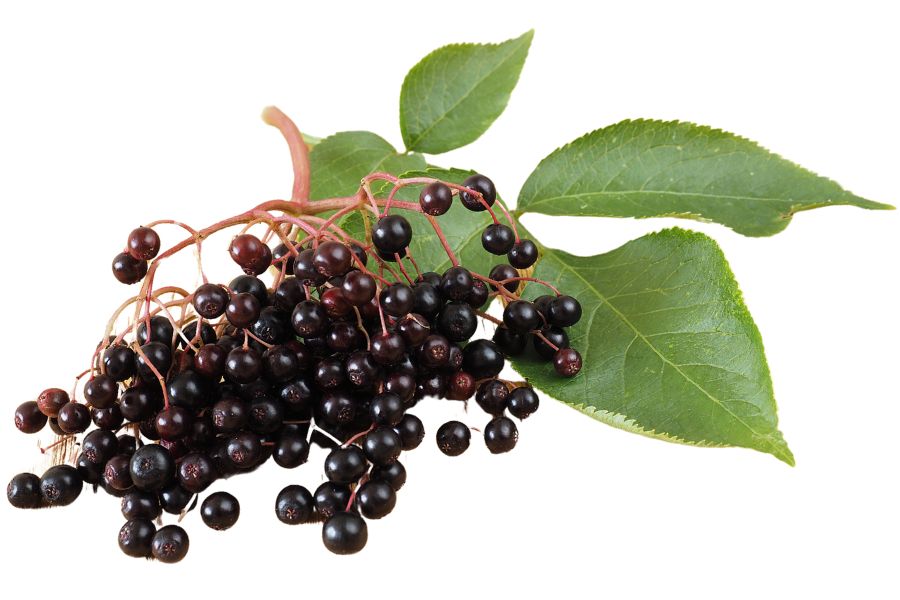You can find dozens of edible plants growing naturally across Iowa, from the woods to the water’s edge. Curly dock and dandelion are two of the earliest greens you’ll see each year, and both are easy to work with in the kitchen. Others, like elderberries, come later and offer fruit you can preserve.
A lot of these plants have been used for generations, but few people recognize them today. Stinging nettle is one of the best leafy greens out there if you cook it properly. Hazelnuts from wild shrubs can be gathered in late summer and stored for months.
With so many edible plants available, learning to recognize just a few is a good first step. Some are easy to spot, while others take more effort to learn. Either way, the more you recognize, the more options you’ll have to bring something different home every time.
What We Cover In This Article:
- The Edible Plants Found in the State
- Toxic Plants That Look Like Edible Plants
- How to Get the Best Results Foraging
- Where to Find Forageables in the State
- Peak Foraging Seasons
- The extensive local experience and understanding of our team
- Input from multiple local foragers and foraging groups
- The accessibility of the various locations
- Safety and potential hazards when collecting
- Private and public locations
- A desire to include locations for both experienced foragers and those who are just starting out
Using these weights we think we’ve put together the best list out there for just about any forager to be successful!
A Quick Reminder
Before we get into the specifics about where and how to find these plants and mushrooms, we want to be clear that before ingesting any wild plant or mushroom, it should be identified with 100% certainty as edible by someone qualified and experienced in mushroom and plant identification, such as a professional mycologist or an expert forager. Misidentification can lead to serious illness or death.
All plants and mushrooms have the potential to cause severe adverse reactions in certain individuals, even death. If you are consuming wild foragables, it is crucial to cook them thoroughly and properly and only eat a small portion to test for personal tolerance. Some people may have allergies or sensitivities to specific mushrooms and plants, even if they are considered safe for others.
The information provided in this article is for general informational and educational purposes only. Foraging involves inherent risks.
The Edible Plants Found in the State
Wild plants found across the state can add fresh, seasonal ingredients to your meals:
Lamb’s Quarters (Chenopodium album)
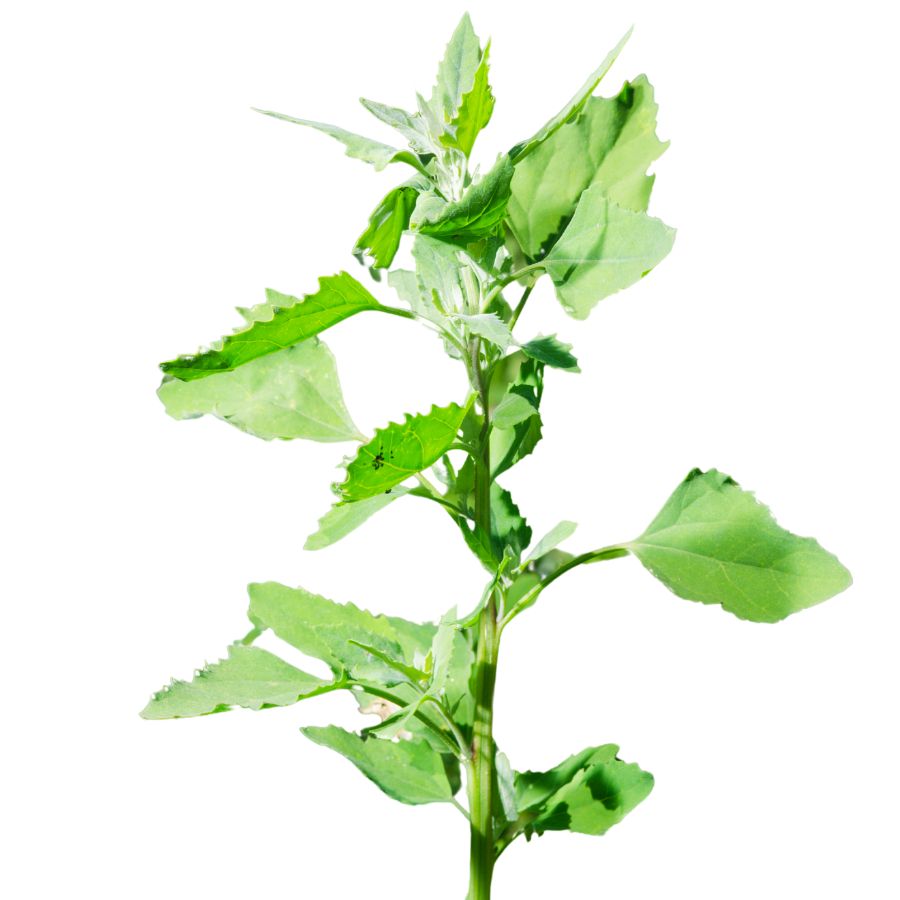
Lamb’s quarters, also called wild spinach and pigweed, has soft green leaves that often look dusted with a white, powdery coating. The leaves are shaped a little like goose feet, with slightly jagged edges and a smooth underside that feels almost velvety when you touch it.
A few plants can be confused with lamb’s quarters, like some types of nightshade, but true lamb’s quarters never have berries and its leaves are usually coated in that distinctive white bloom. Always check that the stems are grooved and not round and smooth like the poisonous lookalikes.
When you taste lamb’s quarters, you will notice it has a mild, slightly nutty flavor that gets richer when cooked. The young leaves, tender stems, and even the seeds are all edible, but you should avoid eating the older stems because they become tough and stringy.
People often sauté lamb’s quarters like spinach, blend it into smoothies, or dry the leaves for later use in soups and stews. It is also rich in oxalates, so you will want to cook it before eating large amounts to avoid any problems.
Stinging Nettle (Urtica dioica)
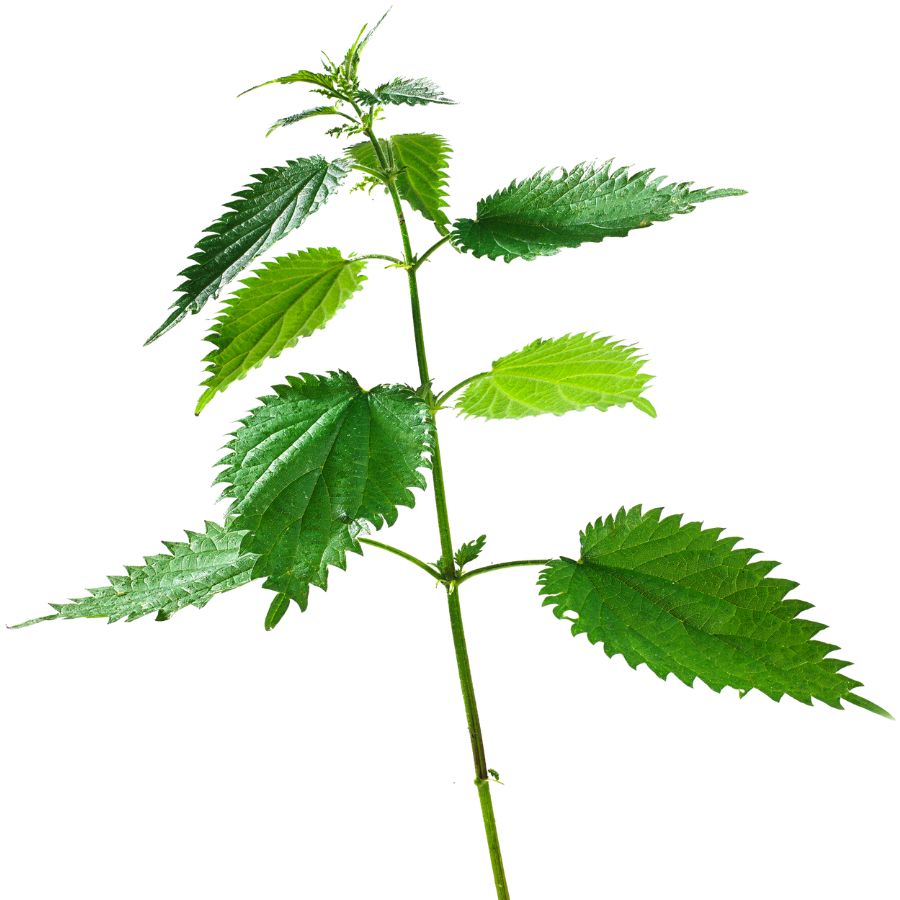
Stinging nettle is also known as burn weed or devil leaf, and it definitely earns those names. The tiny hairs on its leaves and stems can leave a painful, tingling rash if you brush against it raw, so always wear gloves when handling it.
Once it’s cooked or dried, those stingers lose their punch, and the leaves turn mild and slightly earthy in flavor. The texture softens too, making it a solid substitute for spinach in soups, pastas, or even as a simple sauté.
The young leaves and tender tops are what you want to collect. Avoid the tough lower stems and older leaves, which can be gritty or unpleasant to chew.
Some people confuse stinging nettle with purple deadnettle or henbit, but those don’t sting and have more rounded, fuzzy leaves. If the plant doesn’t make your skin react, it’s not stinging nettle.
Milkweed (Asclepias syriaca)
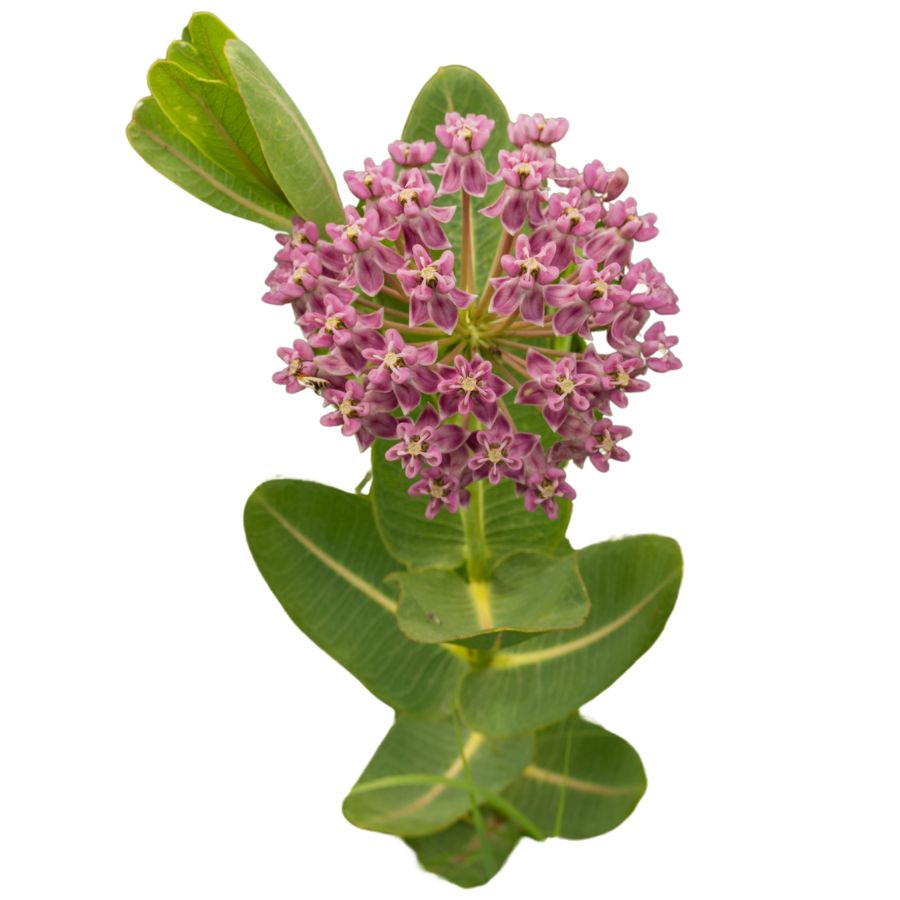
Known for its thick stems, broad leaves, and clusters of pinkish-purple flowers, common milkweed is sometimes called silkweed or butterfly flower. When you snap a stem or leaf, it releases a milky sap that helps you tell it apart from other plants that can be harmful.
If you want to try it in the kitchen, focus on gathering the young shoots, the tightly closed flower buds, and the small, immature pods. These parts have a mild, slightly sweet flavor when cooked, and their soft texture makes them a good addition to soups, sautés, and fritters.
Getting it ready to eat takes a little care, since boiling the plant parts in several changes of water helps remove bitterness and unwanted compounds. Some people also like to steam the buds or fry the pods lightly to bring out their best taste.
Although monarch caterpillars rely on this plant for survival, it has a long history of being used by people as well. Watch out for lookalikes like dogbane, though, since they share the same milky sap but are dangerously toxic if eaten.
Jerusalem Artichoke (Helianthus tuberosus)
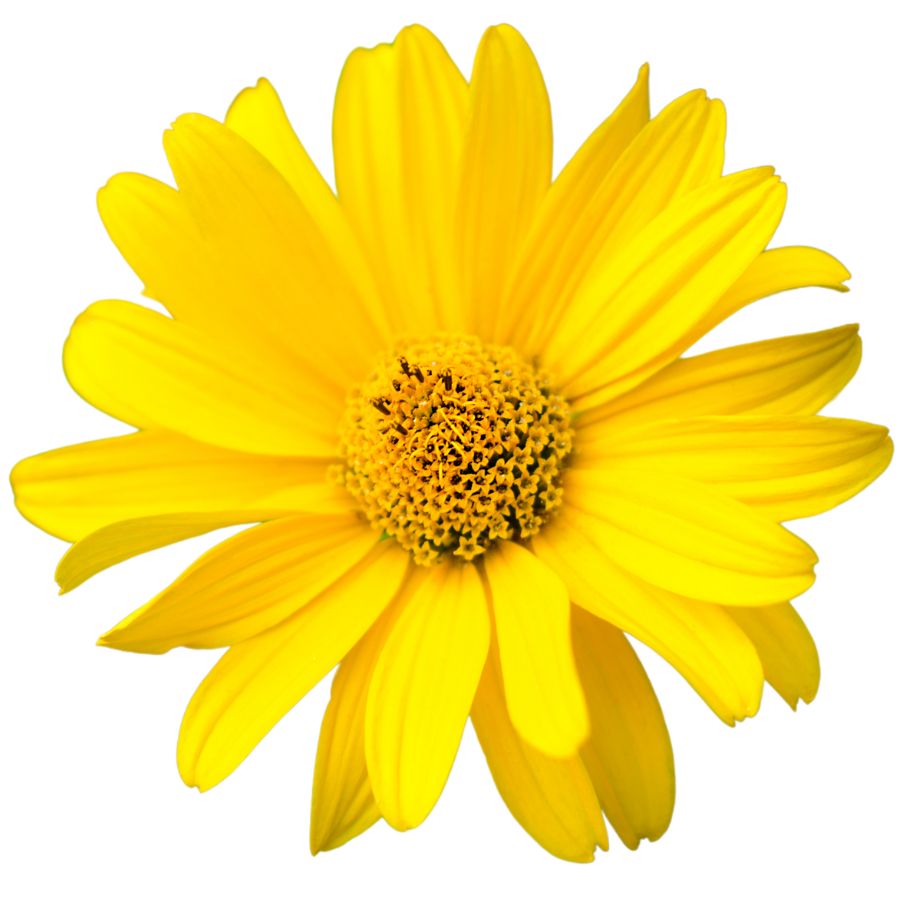
Jerusalem artichoke grows tall with sunflower-like blooms and has knobby underground tubers. The tubers are tan or reddish and look a bit like ginger root, though they belong to the sunflower family.
The part you’re after is the tuber, which has a nutty, slightly sweet flavor and a crisp texture when raw. You can roast, sauté, boil, or mash them like potatoes, and they hold their shape well in soups and stir-fries.
Some people experience gas or bloating after eating sunchokes due to the inulin they contain, so it’s a good idea to try a small amount first. Cooking them thoroughly can help reduce the chances of digestive discomfort.
Sunchokes don’t have many dangerous lookalikes, but it’s important not to confuse the plant with other sunflower relatives that don’t produce tubers. The above-ground part resembles a small sunflower, but it’s the knotted, underground tubers that are worth digging up.
Wild Leek / Ramp (Allium tricoccum)
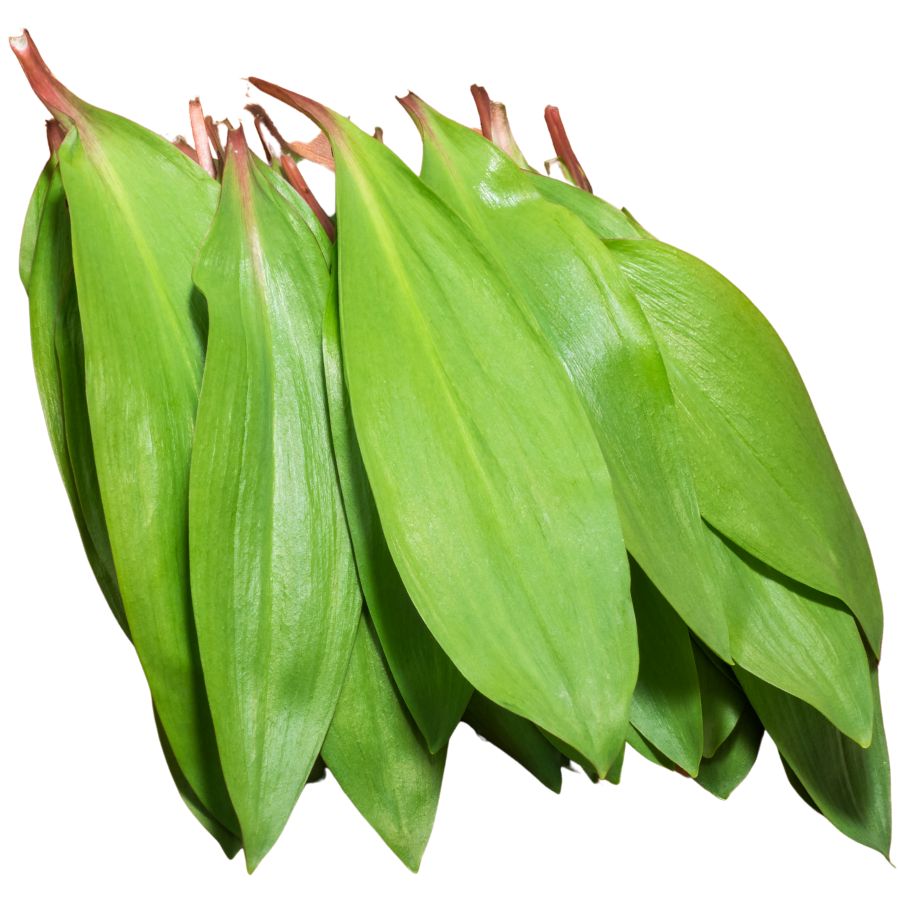
Known as wild leek, ramp, or ramson, this flavorful plant is famous for its broad green leaves and slender white stems. It grows low to the ground and gives off a strong onion-like scent when bruised, which can help you tell it apart from toxic lookalikes like lily of the valley.
If you give it a taste, you will notice a bold mix of onion and garlic flavors, with a tender texture that softens even more when cooked. People often sauté the leaves and stems, pickle the bulbs, or blend them into pestos and soups.
The entire plant can be used for cooking, but the leaves and bulbs are the most prized parts. It is important not to confuse it with similar-looking plants that do not have the signature onion smell when crushed.
Wild leek populations have declined in some areas because of overharvesting, so it is a good idea to only take a few from any given patch. When harvested thoughtfully, these vibrant greens can add a punch of flavor to just about anything you make.
Wild Garlic (Allium vineale)
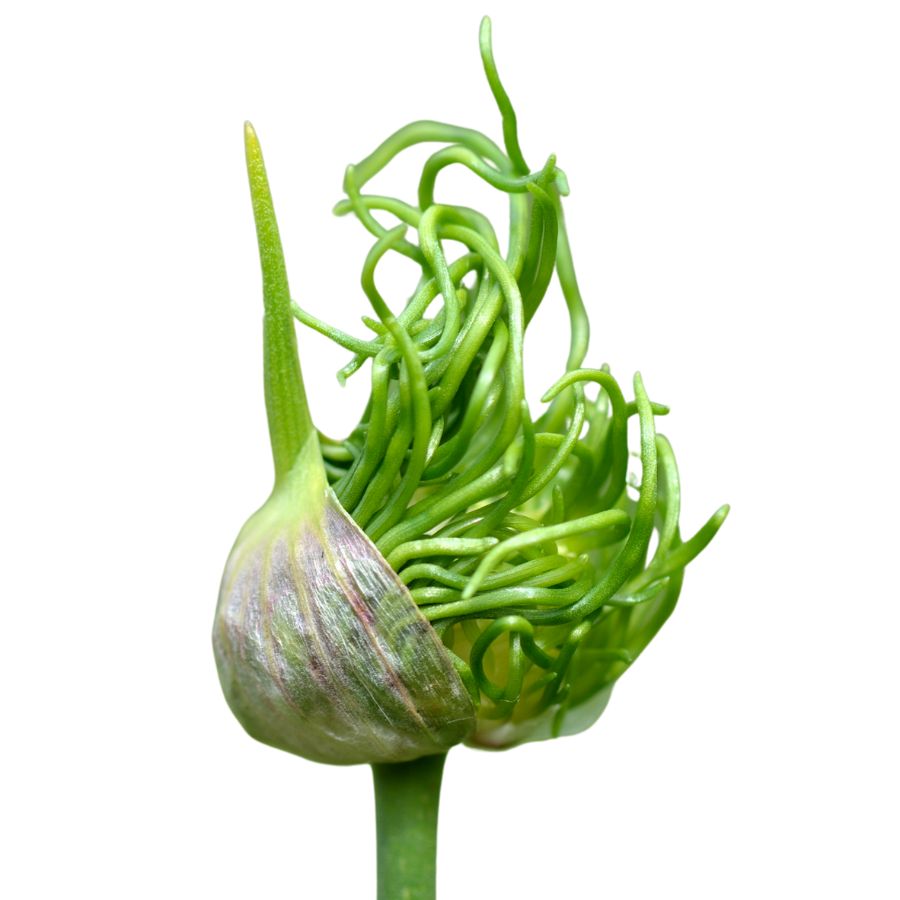
Wild garlic has slender, hollow leaves that look a lot like chives. When you crush the leaves or bulbs between your fingers, they release a strong garlicky smell that makes identification easier.
The are both edible, and You can use the bulbs and leaves raw or cooked in different dishes. Just make sure you are not mistaking it for toxic lookalikes like death camas, which does not smell like garlic at all.
Wild garlic has a sharp, onion-garlic flavor that becomes milder when cooked. You can chop the leaves into salads, stir them into soups, or blend them into sauces like pesto.
One thing to watch for is that the bulbs can sometimes have a tough, fibrous outer layer you will want to peel away before eating. If you want the best flavor, focus on younger, tender leaves rather than older, stringy ones.
Purslane (Portulaca oleracea)
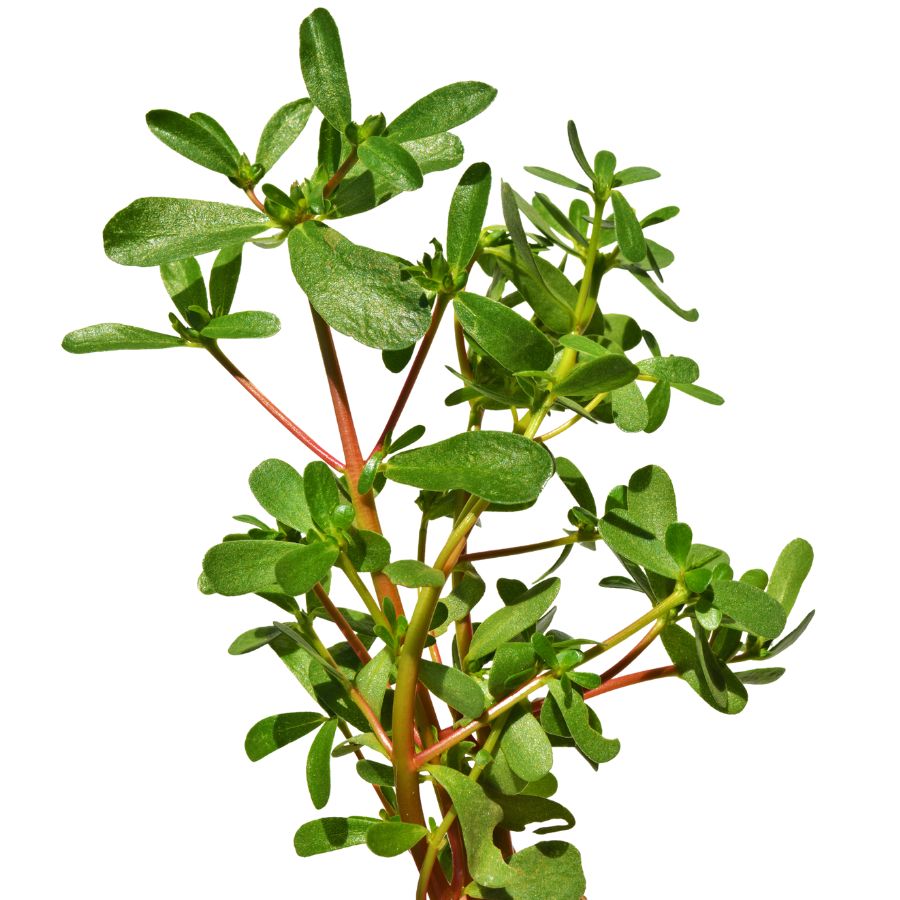
Purslane is a hardy, low-growing plant that’s also sometimes known as little hogweed or verdolaga. It has smooth, reddish stems and thick, paddle-shaped leaves that feel a bit waxy when you touch them.
The stems, leaves, and tiny yellow flowers are all edible, while the roots are not typically eaten. Purslane has a crisp texture with a slightly tart, lemony flavor that works well raw or cooked.
Some plants that look similar include spurge, which has a milky sap and is not edible, so it is important to check for purslane’s smooth, succulent stems and lack of sap. Always double-check by gently snapping a stem to make sure no white liquid appears.
You can toss fresh purslane into salads, sauté it lightly like spinach, or pickle it for later use. Its mild tartness and slight crunch make it a refreshing addition to sandwiches, soups, and even stir-fries.
Curly Dock (Rumex crispus)
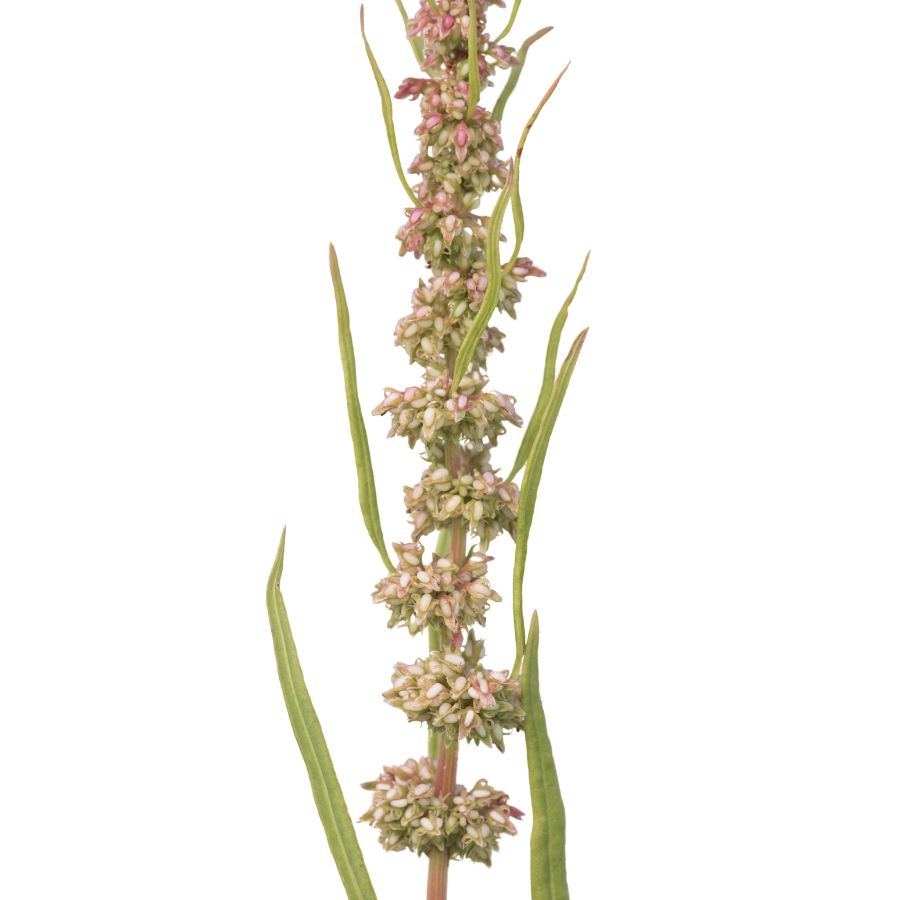
Curly dock, sometimes called yellow dock, is easy to spot once you know what to look for. It has long, wavy-edged leaves that form a rosette at the base, with tall stalks that eventually turn rusty brown as seeds mature.
The young leaves are edible and often cooked to mellow out their sharp, lemony taste, which can be too strong when eaten raw. You can also dry and powder the seeds to use as a flour supplement, although they are tiny and take some effort to prepare.
Curly dock has some lookalikes, like other types of dock and sorrel, but its heavily crinkled leaf edges and thick taproot help it stand out. Be careful not to confuse it with plants like wild rhubarb, which can have toxic parts if misidentified.
Besides being edible, curly dock has a history of being used in homemade remedies for skin irritation. The roots are not eaten raw because they are tough and contain compounds that can upset your stomach if you are not careful.
Dandelion (Taraxacum officinale)
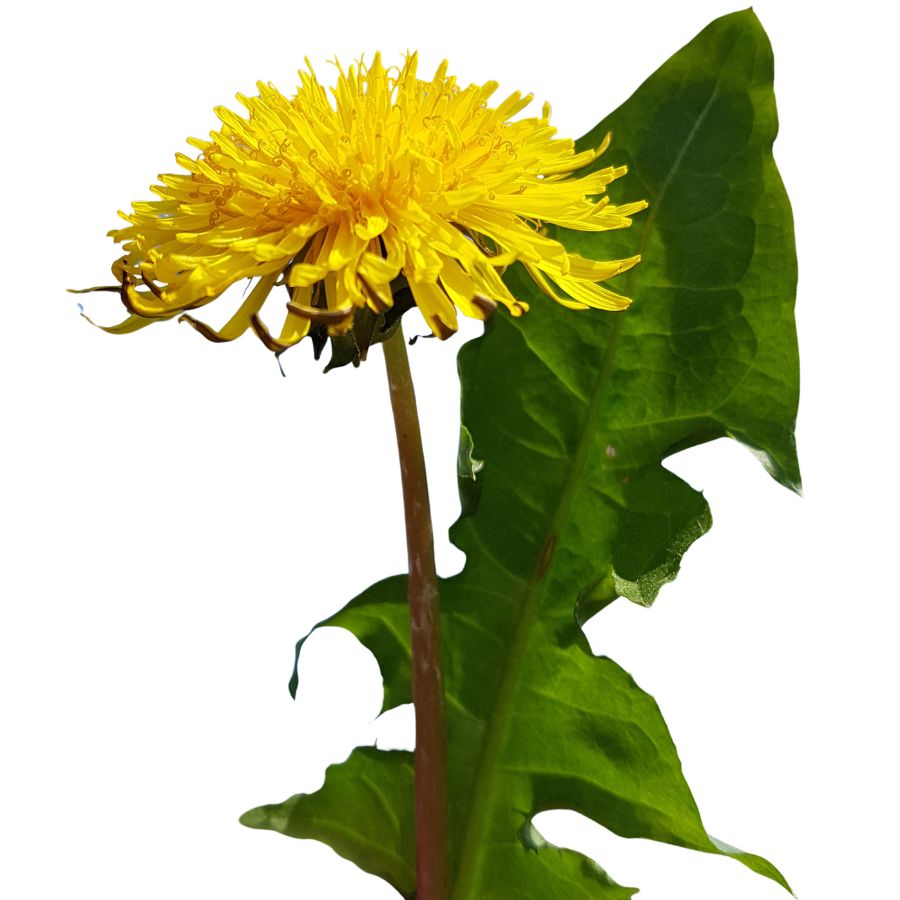
Bright yellow flowers and jagged, deeply toothed leaves make dandelions easy to spot in open fields, lawns, and roadsides. You might also hear them called lion’s tooth, blowball, or puffball once the flowers turn into round, white seed heads.
Every part of the dandelion is edible, but you will want to avoid harvesting from places treated with pesticides or roadside areas with heavy car traffic. Besides being a food source, dandelions have been used traditionally for simple herbal remedies and natural dye projects.
Young dandelion leaves have a slightly bitter, peppery flavor that works well in salads or sautés, and the flowers can be fried into fritters or brewed into tea. Some people even roast the roots to make a coffee substitute with a rich, earthy taste.
One thing to watch out for is cat’s ear, a common lookalike with hairy leaves and branching flower stems instead of a single, hollow one. To make sure you have a true dandelion, check for a smooth, hairless stem that oozes a milky sap when broken.
Cattail (Typha latifolia)
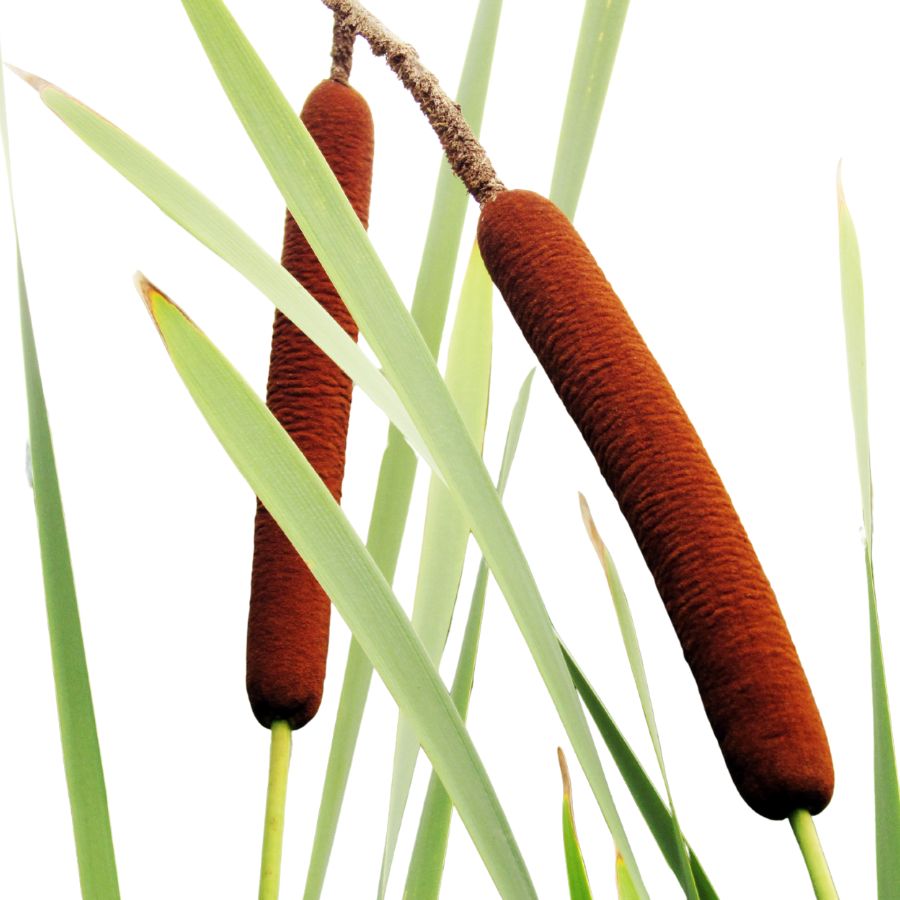
Cattails, often called bulrushes or corn dog grass, are easy to spot with their tall green stalks and brown, sausage-shaped flower heads. They grow thickly along the edges of ponds, lakes, and marshes, forming dense stands that are hard to miss.
Almost every part of the cattail is edible, including the young shoots, flower heads, and starchy rhizomes. You can eat the tender shoots raw, boil the flower heads like corn on the cob, or grind the rhizomes into flour for baking.
Besides food, cattails have long been used for making mats, baskets, and even insulation by weaving the dried leaves and using the fluffy seeds. Their combination of usefulness and abundance has made them an important survival plant for many cultures.
One thing you need to watch for is young cattail shoots being confused with similar-looking plants like iris, which are toxic. A real cattail shoot will have a mild cucumber-like smell when you snap it open, while iris plants smell bitter or unpleasant.
Black Walnut (Juglans nigra)
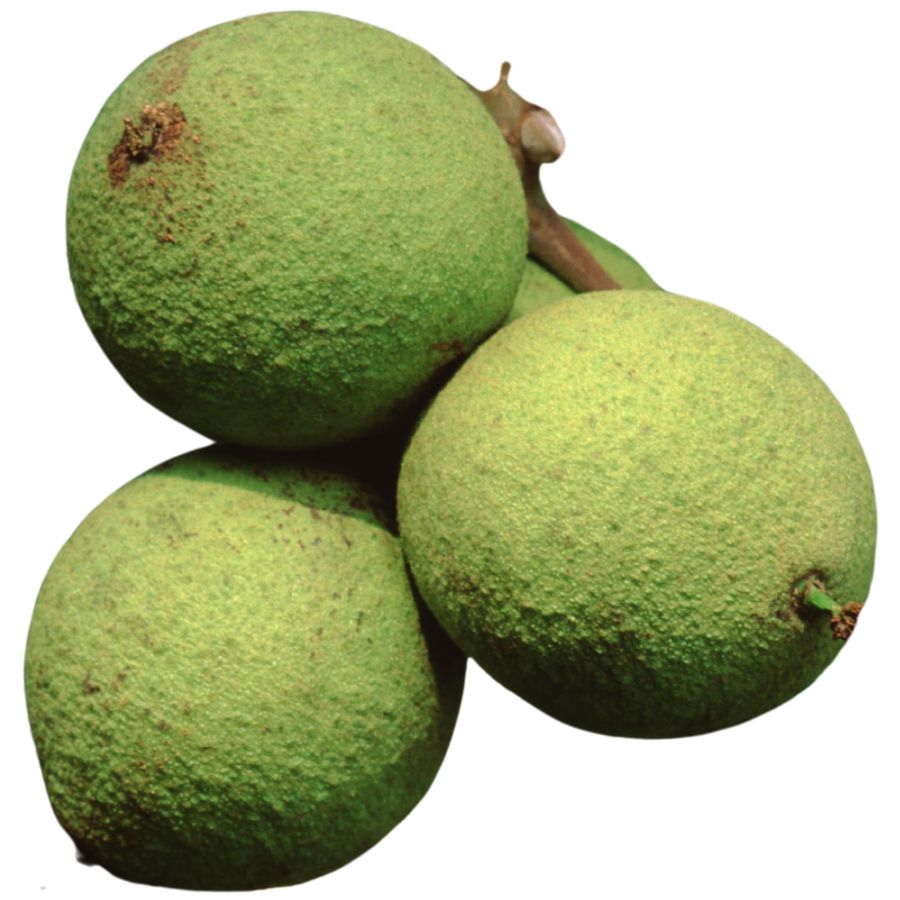
The nuts of the black walnut, sometimes called American walnut or eastern black walnut, have a tough outer husk and a deeply ridged shell inside. When you crack them open, you will find a rich, oily seed with an earthy, slightly bitter flavor that sets them apart from the sweeter English walnut.
It is easy to confuse black walnut with butternut, another tree with compound leaves and rough bark. If you check the nuts closely, black walnut fruits are round with a thick green husk, while butternuts are more oval and sticky.
When you get your hands on the nuts, the common ways to prepare them include baking them into cookies, sprinkling them over salads, or grinding them into a strong-tasting flour. The seeds themselves have a firm, almost chewy texture when raw and become crunchy after roasting.
Only the inner seed is eaten, while the outer husk and shell are discarded because they contain compounds that can irritate your skin. A fun fact about this plant is that even the roots and leaves produce a chemical called juglone, which can make it hard for other plants to grow nearby.
American Hazelnut (Corylus americana)
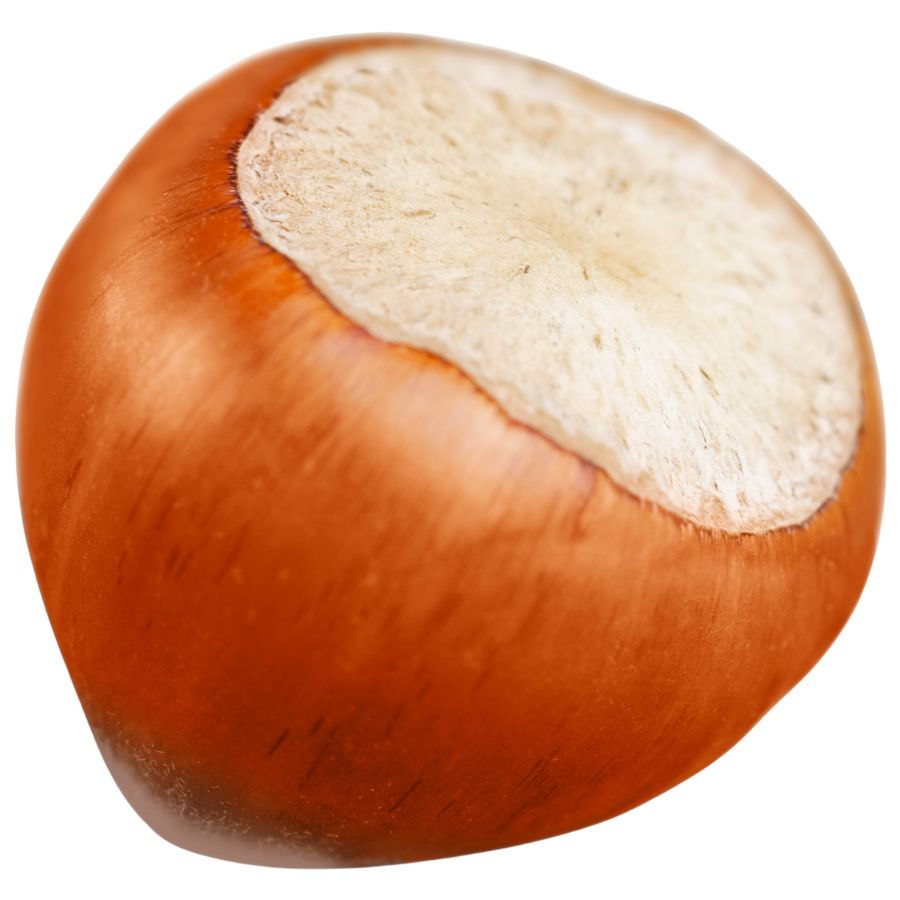
Clusters of round, fringed husks tucked among bushy green leaves usually mean you have found American hazelnut, sometimes called American filbert. It grows as a wide, shrubby plant that spreads along forest edges, open woods, and overgrown fields.
The nuts inside are rich and buttery, with a firm texture that turns creamy when roasted or ground into flour. You can eat them raw, toss them into baked goods, or crush them into a thick, flavorful spread.
It helps to know the difference between American hazelnut and its close cousin, beaked hazelnut, which hides its nut inside a long, pointed husk. Both plants are safe to eat, but the shape of the husk makes it easy to tell which one you have.
Only the inner nut is gathered for food; the leafy husk and hard outer shell are tossed aside. If you leave them too long, local wildlife like squirrels will clear out the patch faster than you can.
Hop Clover (Trifolium campestre)
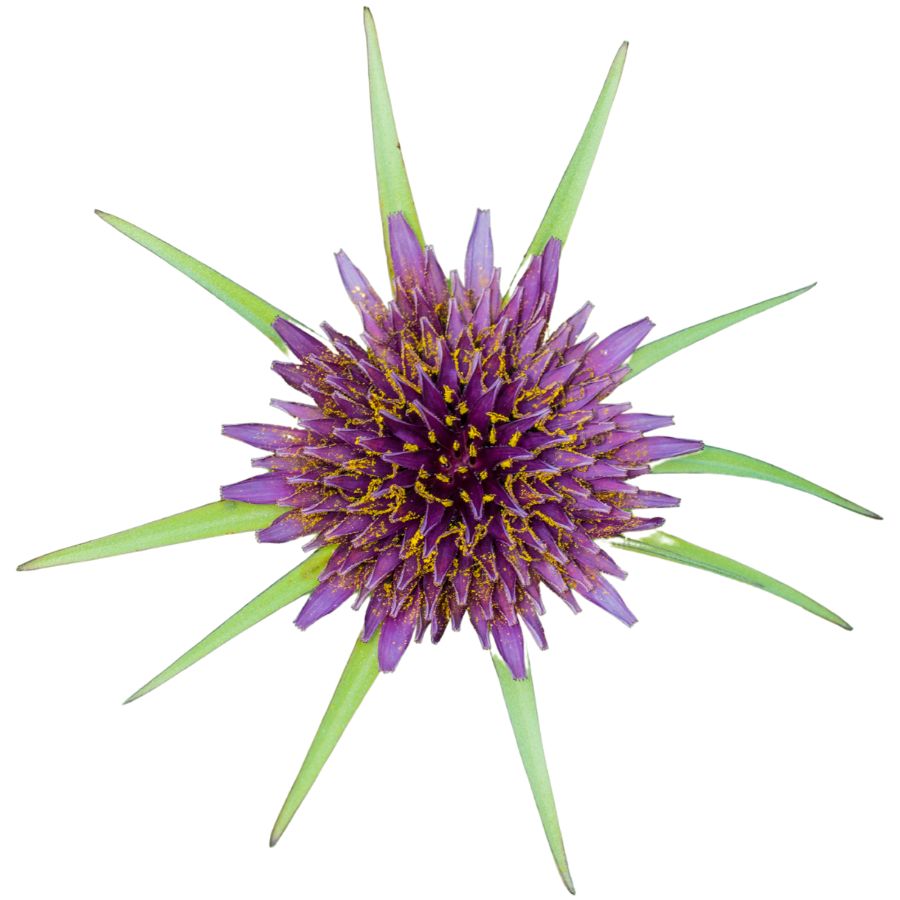
Hop clover has soft, green trifoliate leaves and rounded yellow flower heads that turn brown and papery as they dry. The flowers and leaves are edible, but skip the stems and roots, which are stringy and unpleasant.
Its taste is mild and grassy, with a barely-sweet hint that works well in herbal teas or chopped into cold grain salads. Some people also add the raw leaves to sandwiches or fold them into soft cheese spreads.
White clover and hop clover look similar, but white clover produces whitish flower balls and tends to grow flatter to the ground. The yellow coloring of hop clover is your clearest sign it’s not white or red clover.
Don’t overdo it—eating large amounts may cause bloating or mild digestive upset in some people. Stick to small quantities, especially if you’re eating it raw.
American Plum (Prunus americana)
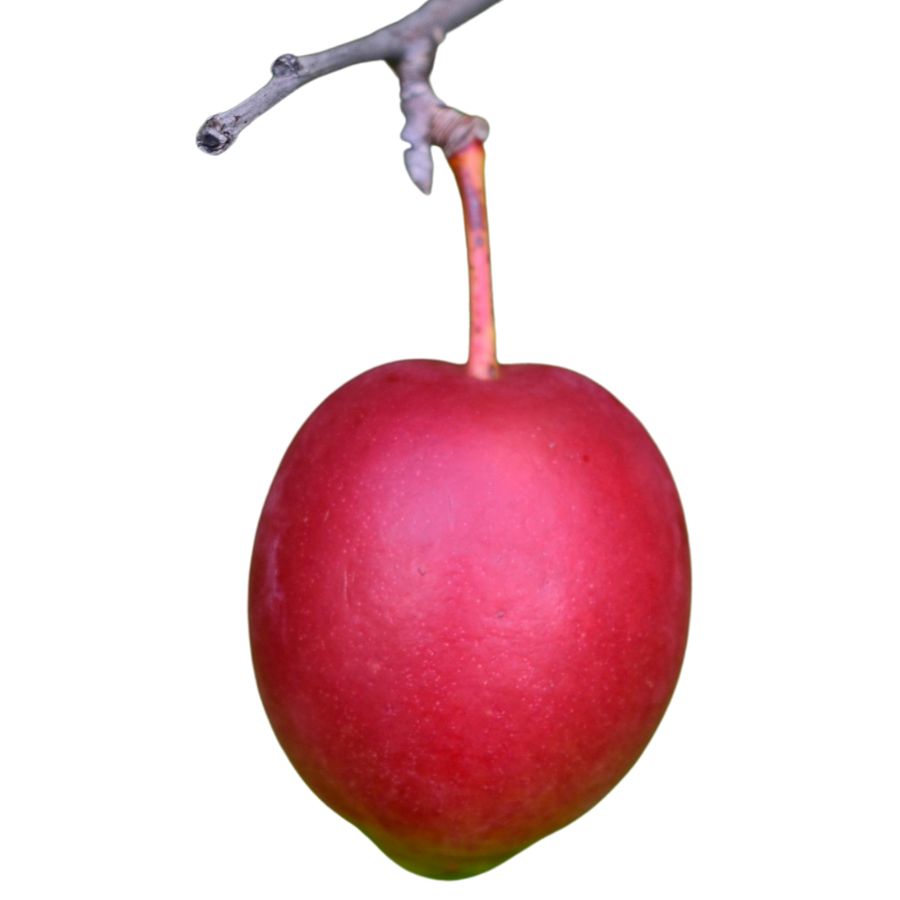
American plum, also called wild plum or river plum, produces small round fruits that range in color from yellow to deep red when ripe. The skin is slightly tart, but the flesh is soft, juicy, and sweet with a hint of spice.
You can eat the fruit raw or turn it into jellies, sauces, or wines—its natural pectin makes it ideal for preserves. Just avoid the seeds and leaves, which contain compounds that can release cyanide when crushed or chewed.
Its bark is rough and dark, and the branches often have short, sharp spines. The plant’s simple oval leaves and white spring flowers help distinguish it from less edible lookalikes like black cherry, which has longer, narrower leaves with a more bitter fruit.
If the fruit has a strong bitter almond smell when crushed, steer clear—it might be a different species altogether. American plum fruit clusters tend to be smaller and more tightly packed than those of cultivated varieties.
Mulberry (Morus rubra)
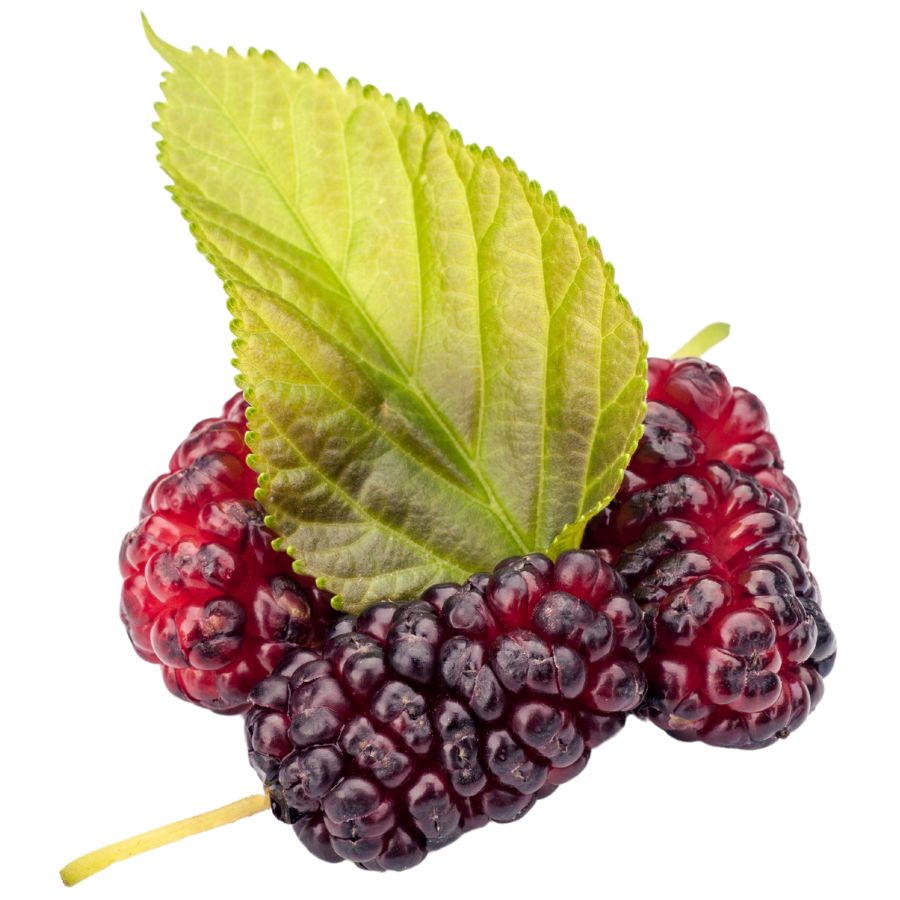
Sweet, juicy, and often overlooked, mulberries are one of the easiest wild berries to recognize. Known by names like white mulberry and red mulberry, these trees produce small, blackberry-like fruits that range from pale pink to deep purple.
The berries have a soft, almost melting texture with a mild tartness behind the sugar. You can eat them fresh by the handful, bake them into pies, or simmer them down into homemade jams and syrups.
While the fruits are safe and delicious when ripe, you should avoid eating the unripe berries or any part of the tree’s sap, which can cause stomach upset. It is also worth knowing that mulberries are delicate and bruise easily when picked, so handle them gently.
Red osier dogwood and some honeysuckles can produce berries that look similar from a distance, but true mulberries grow singly or in loose clusters along the branches and have a distinctive leaf shape that sets them apart. Always double-check the leaf texture and berry arrangement before eating any wild fruits.
Purple Salsify (Tragopogon porrifolius)

Purple salsify has long, grasslike leaves and a tall flower stalk that ends in a pale purple, dandelion-like bloom. What you’re after is the taproot—shaped like a thin parsnip and often described as tasting like oysters or artichokes.
The root has a creamy texture when cooked and does well boiled, mashed, or sliced into soups. You can also peel and roast it like any root vegetable for a sweeter flavor.
The unopened flower buds and young shoots are edible too, though the root is most commonly used. Avoid confusing it with wild lettuce or goat’s beard; those can look similar but don’t have the same milky sap or root scent.
Older roots become fibrous and lose their subtle flavor, so tenderness is a good indicator when foraging. The outer skin is usually scrubbed or peeled before cooking.
Elderberry (Sambucus canadensis)
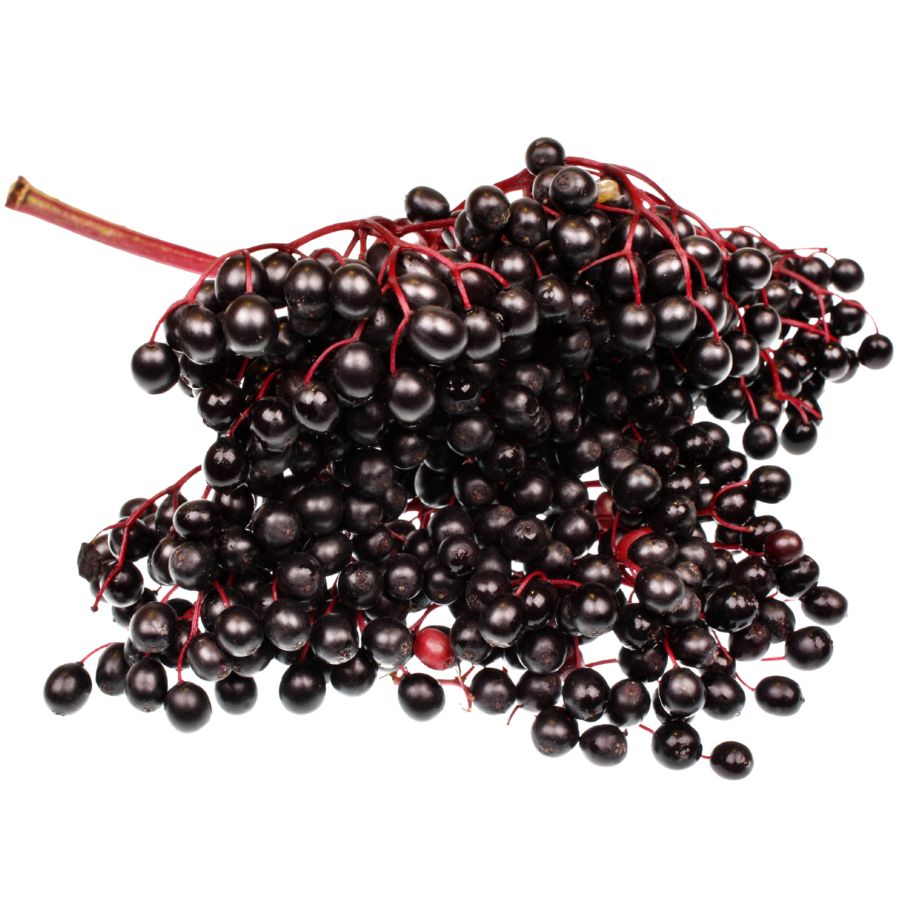
Elderberry is often called American elder, common elder, or sweet elder. It grows as a large, shrubby plant with clusters of tiny white flowers that eventually turn into deep purple to black berries.
You can recognize elderberry by its compound leaves with five to eleven serrated leaflets and its flat-topped flower clusters. One important thing to watch out for is its toxic lookalikes, like pokeweed, which has very different smooth-edged leaves and reddish stems.
The ripe berries have a tart, almost earthy flavor and a soft texture when cooked. People usually cook elderberries into syrups, jams, pies, or wine because eating raw berries can cause nausea.
Only the ripe, cooked berries and flowers are edible, while the leaves, stems, and unripe berries are toxic. Always take care to strip the berries cleanly from their stems before using them, as even small bits of stem can cause problems.
Wild Strawberry (Fragaria virginiana)
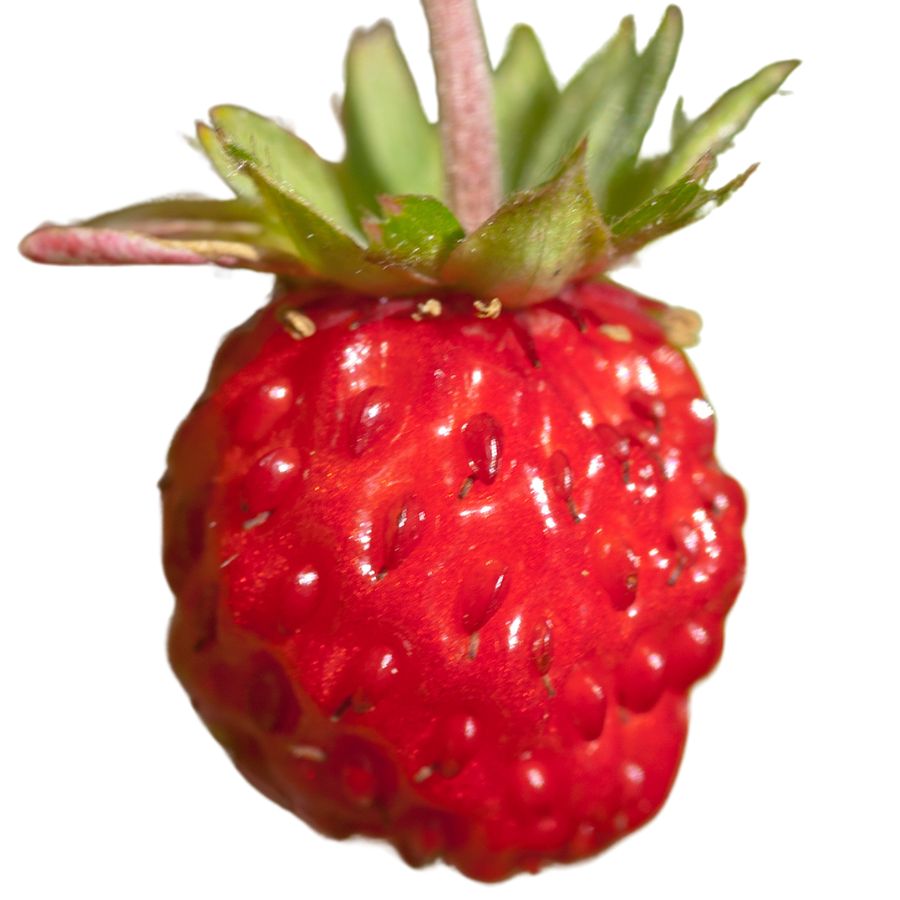
Wild strawberry, sometimes called Virginia strawberry or mountain strawberry, grows low to the ground with three-part leaves that have jagged edges. The small white flowers with yellow centers eventually give way to tiny, bright red fruits nestled close to the soil.
The fruits are sweet with a burst of tartness, and their texture is much softer than the large cultivated strawberries you find in stores. You can eat them raw, mix them into jams, or bake them into pies for a rich, fruity flavor.
Wild strawberry can sometimes be confused with mock strawberry, which has similar leaves but produces dry, flavorless fruits and yellow flowers instead of white. Always check the flower color and taste a small piece before collecting more.
Only the berries and the tender young leaves of wild strawberry are edible, with the leaves often brewed into teas. Be careful not to overharvest because these plants grow slowly and support plenty of small wildlife.
Watercress (Nasturtium officinale)
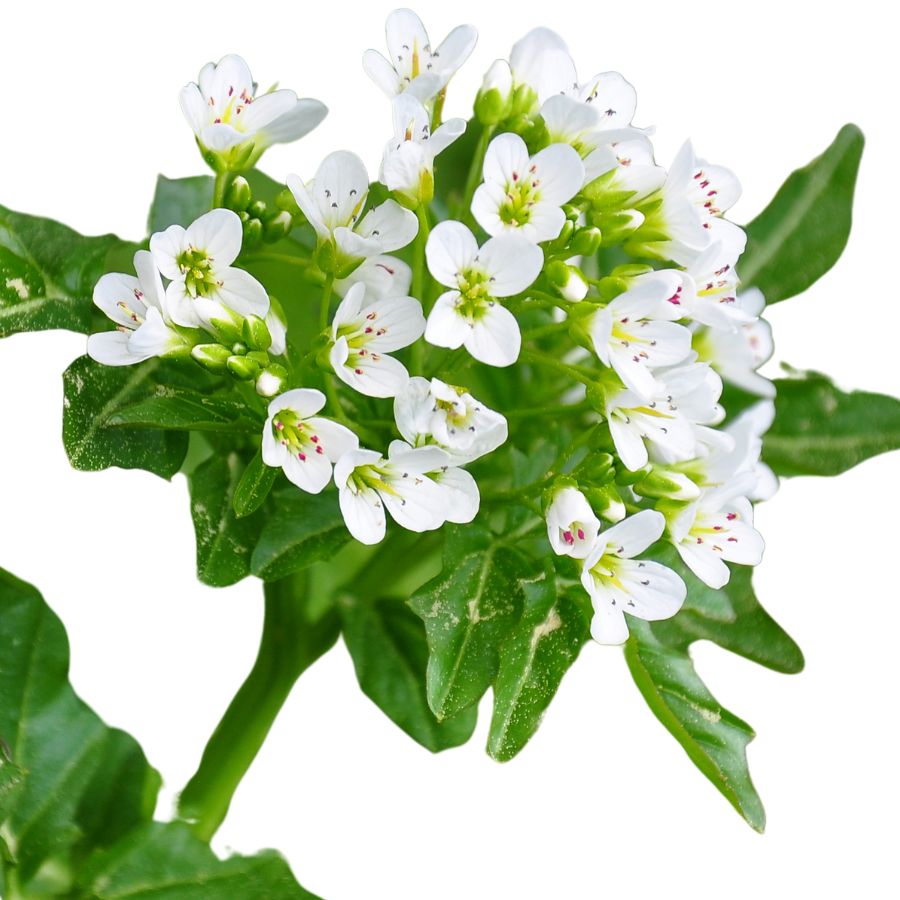
Watercress, also known as yellowcress or garden cress, is an aquatic plant with small, rounded green leaves and hollow stems that often float along the water’s surface. It usually grows in dense mats, and the bright green color is one of the easiest ways to spot it in clear, shallow streams and ponds.
Besides being a popular edible green, watercress has been traditionally used in herbal remedies, especially for boosting digestion and respiratory health.
The leaves and stems are edible, offering a crisp texture and a peppery, slightly spicy taste that can remind you of arugula. People often enjoy it raw in salads, blended into soups, or lightly wilted into stir-fries for a fresh bite.
Stick to eating the leaves and stems, and avoid any parts that look yellowed or slimy, since healthy watercress should always look vibrant and clean.
Watercress has a few lookalikes like lesser celandine or young wild mustard, but true watercress has a distinct sharp flavor and tends to grow only in moving, clean water. Always double-check your identification, because gathering from stagnant or contaminated water sources can expose you to harmful bacteria or parasites.
Garlic Mustard (Alliaria petiolata)
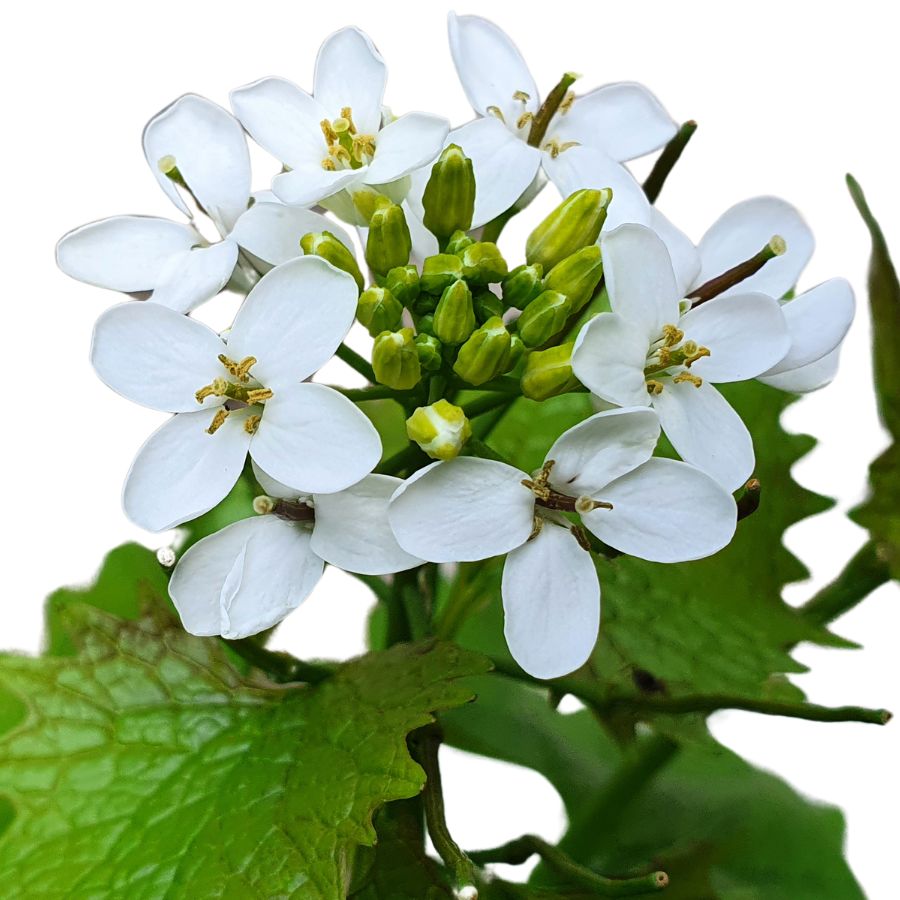
Garlic mustard, sometimes called poor man’s mustard or hedge garlic, has heart-shaped leaves with scalloped edges and small white four-petaled flowers. When you crush the leaves between your fingers, they release a strong garlic-like smell that makes it stand out from similar-looking plants.
The flavor of garlic mustard is sharp and garlicky at first bite, with a peppery bitterness that lingers. Its young leaves are often blended into pestos, stirred into soups, or tossed into salads to add a punch of flavor.
You can also use the roots, which have a taste similar to horseradish when fresh. The seed pods are sometimes collected and used as a spicy seasoning after being dried and crushed.
If you decide to gather some, make sure not to confuse it with plants like ground ivy or purple deadnettle, which do not have that garlic aroma. Stick to harvesting the leaves, flowers, seeds, and roots, and avoid anything with a fuzzy texture or a very different smell.
Toxic Plants That Look Like Edible Plants
There are plenty of wild edibles to choose from, but some toxic native plants closely resemble them. Mistaking the wrong one can lead to severe illness or even death, so it’s important to know exactly what you’re picking.
Poison Hemlock (Conium maculatum)
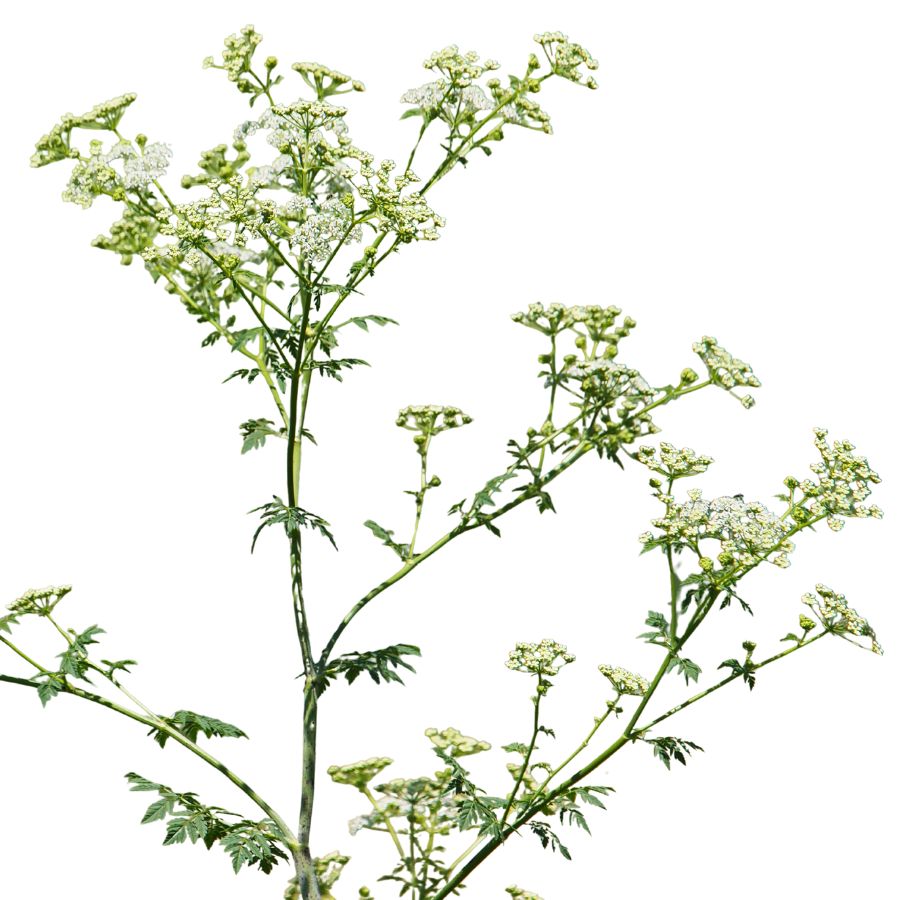
Often mistaken for: Wild carrot (Daucus carota)
Poison hemlock is a tall plant with lacy leaves and umbrella-like clusters of tiny white flowers. It has smooth, hollow stems with purple blotches and grows in sunny places like roadsides, meadows, and stream banks.
Unlike wild carrot, which has hairy stems and a dark central floret, poison hemlock has a musty odor and no flower center spot. It’s extremely toxic; just a small amount can be fatal, and even touching the sap can irritate the skin.
Water Hemlock (Cicuta spp.)
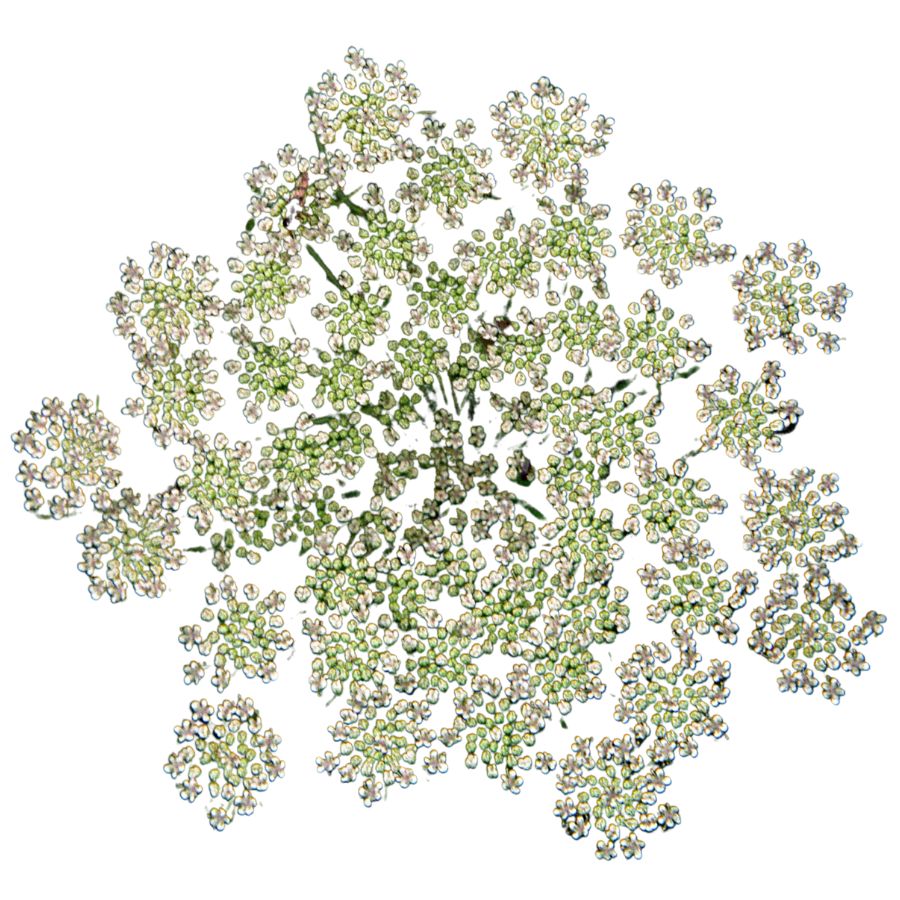
Often mistaken for: Wild parsnip (Pastinaca sativa) or wild celery (Apium spp.)
Water hemlock is a tall, branching plant with umbrella-shaped clusters of small white flowers. It grows in wet places like stream banks, marshes, and ditches, with stems that often show purple streaks or spots.
It can be confused with wild parsnip or wild celery, but its thick, hollow roots have internal chambers and release a yellow, foul-smelling sap when cut. Water hemlock is the most toxic plant in North America, and just a small amount can cause seizures, respiratory failure, and death.
False Hellebore (Veratrum viride)
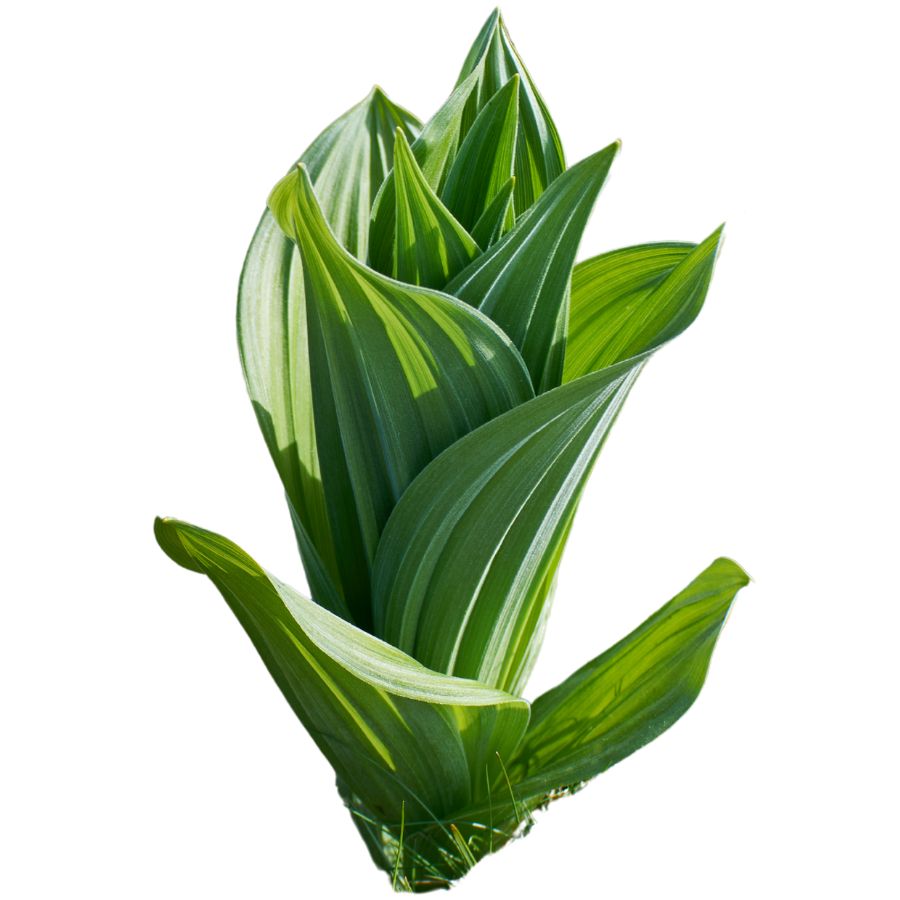
Often mistaken for: Ramps (Allium tricoccum)
False hellebore is a tall plant with broad, pleated green leaves that grow in a spiral from the base, often appearing early in spring. It grows in moist woods, meadows, and along streams.
It’s commonly mistaken for ramps, but ramps have a strong onion or garlic smell, while false hellebore is odorless and later grows a tall flower stalk. The plant is highly toxic, and eating any part can cause nausea, a slowed heart rate, and even death due to its alkaloids that affect the nervous and cardiovascular systems.
Death Camas (Zigadenus spp.)
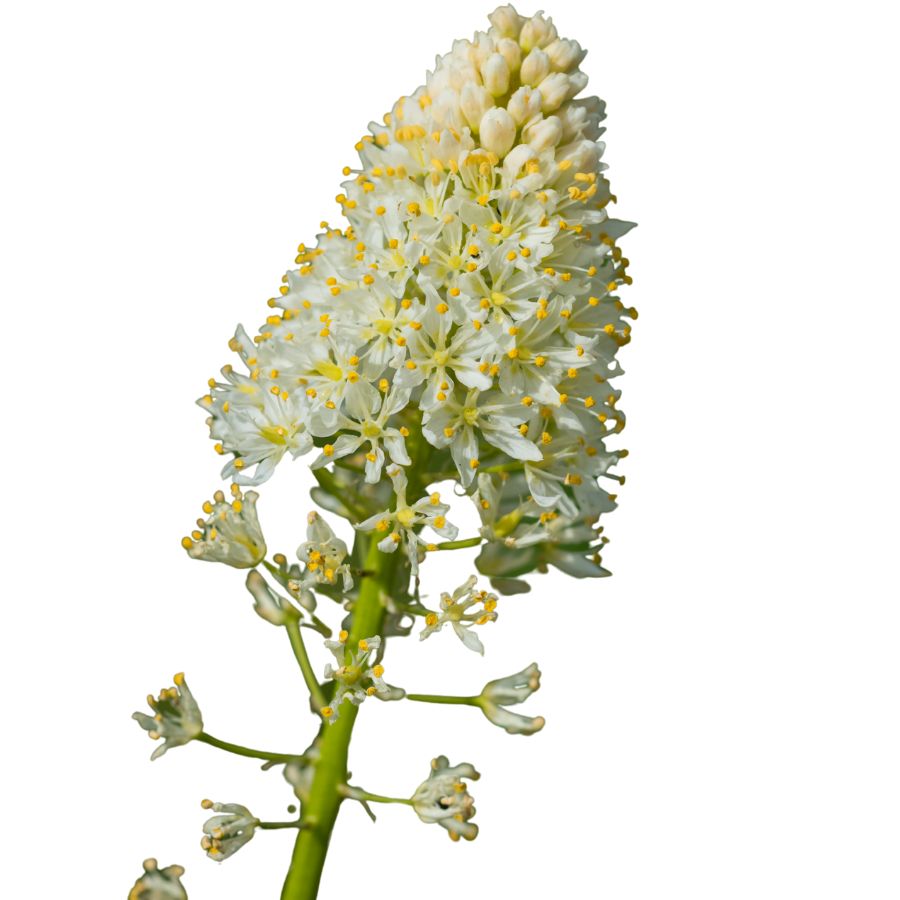
Often mistaken for: Wild onion or wild garlic (Allium spp.)
Death camas is a slender, grass-like plant that grows from underground bulbs and is found in open woods, meadows, and grassy hillsides. It has small, cream-colored flowers in loose clusters atop a tall stalk.
It’s often confused with wild onion or wild garlic due to their similar narrow leaves and habitats, but only Allium plants have a strong onion or garlic scent, while death camas has none. The plant is extremely poisonous, especially the bulbs, and even a small amount can cause nausea, vomiting, a slowed heartbeat, and potentially fatal respiratory failure.
Buckthorn Berries (Rhamnus spp.)
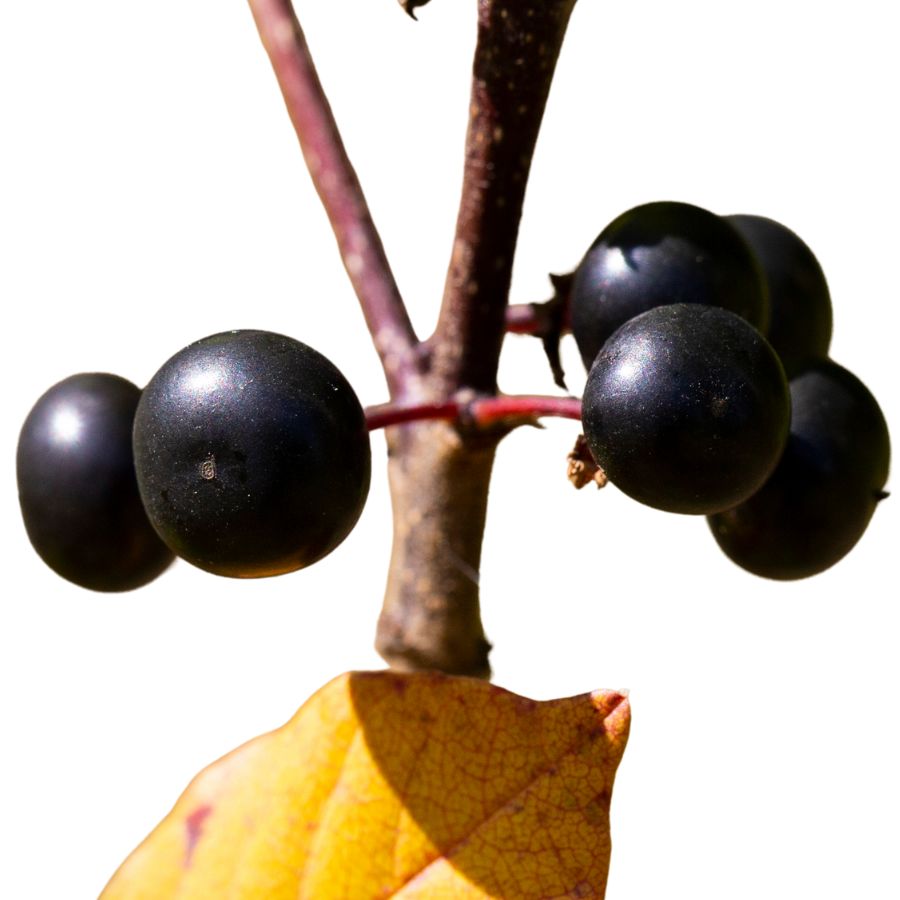
Often mistaken for: Elderberries (Sambucus spp.)
Buckthorn is a shrub or small tree often found along woodland edges, roadsides, and disturbed areas. It produces small, round berries that ripen to dark purple or black and usually grow in loose clusters.
These berries are sometimes mistaken for elderberries and other wild fruits, which also grow in dark clusters, but elderberries form flat-topped clusters on reddish stems while buckthorn berries are more scattered. Buckthorn berries are unsafe to eat as they contain compounds that can cause cramping, vomiting, and diarrhea, and large amounts may lead to dehydration and serious digestive problems.
Mayapple (Podophyllum peltatum)
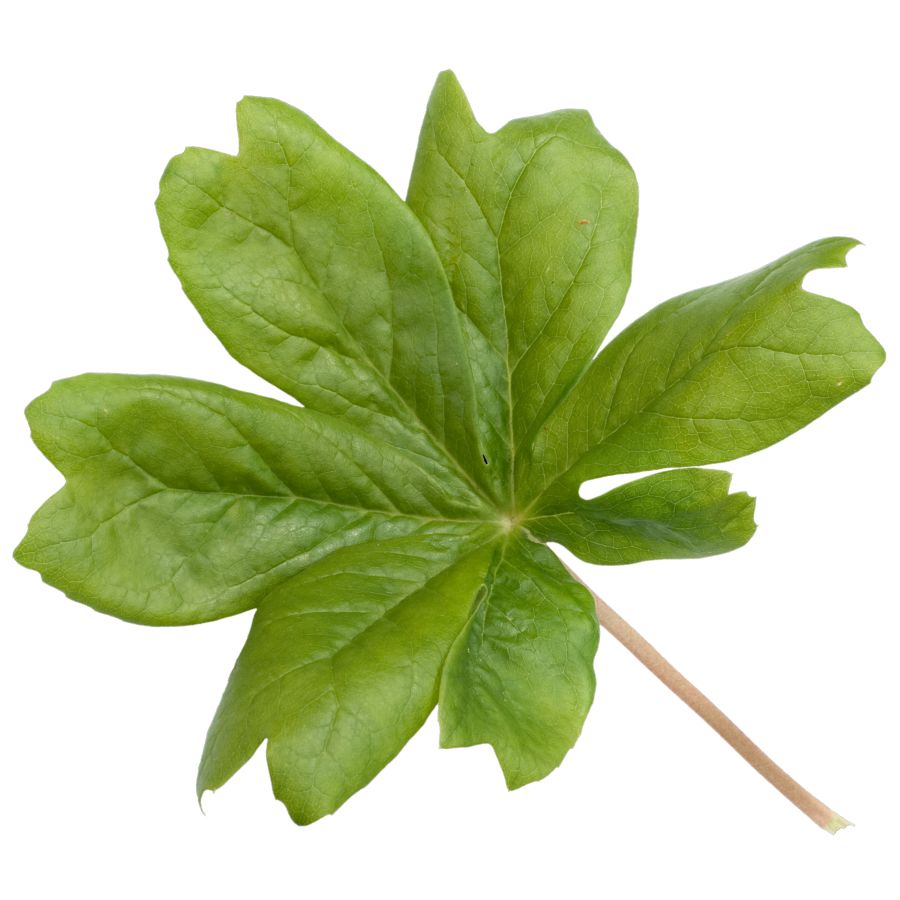
Often mistaken for: Wild grapes (Vitis spp.)
Mayapple is a low-growing plant found in shady forests and woodland clearings. It has large, umbrella-like leaves and produces a single pale fruit hidden beneath the foliage.
The unripe fruit resembles a small green grape, causing confusion with wild grapes, which grow in woody clusters on vines. All parts of the mayapple are toxic except the fully ripe, yellow fruit, which is only safe in small amounts. Eating unripe fruit or other parts can lead to nausea, vomiting, and severe dehydration.
Virginia Creeper (Parthenocissus quinquefolia)
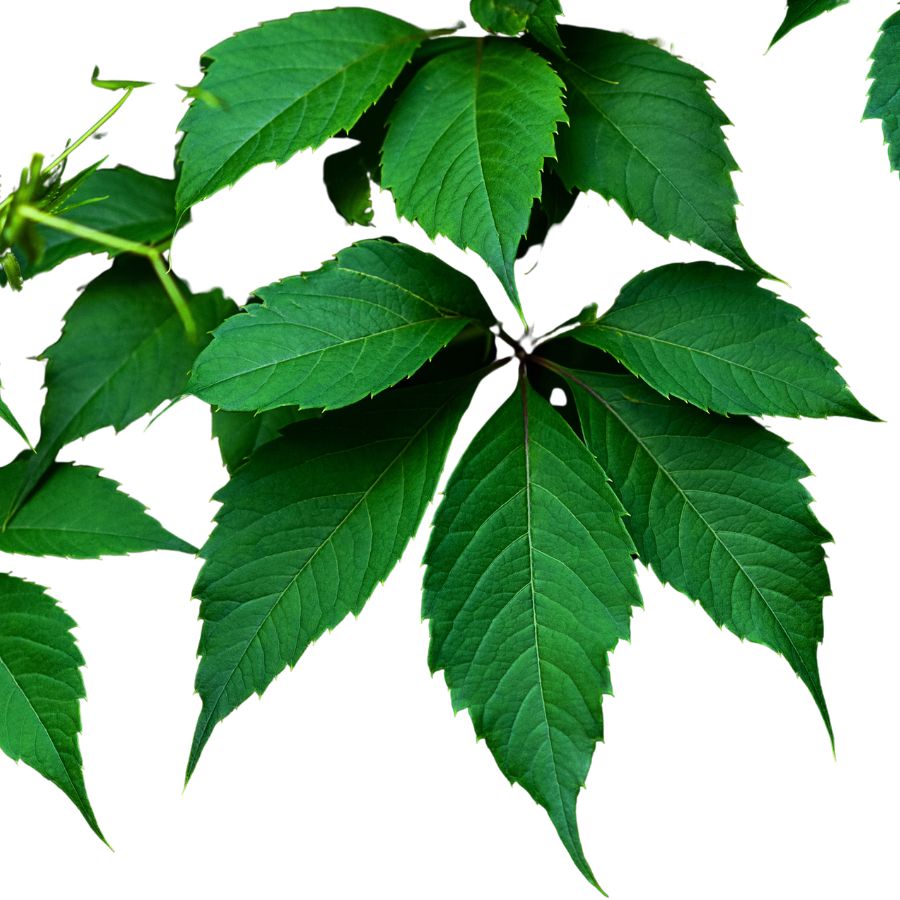
Often mistaken for: Wild grapes (Vitis spp.)
Virginia creeper is a fast-growing vine found on fences, trees, and forest edges. It has five leaflets per stem and produces small, bluish-purple berries from late summer to fall.
It’s often confused with wild grapes since both are climbing vines with similar berries, but grapevines have large, lobed single leaves and tighter fruit clusters. Virginia creeper’s berries are toxic to humans and contain oxalate crystals that can cause nausea, vomiting, and throat irritation.
Castor Bean (Ricinus communis)
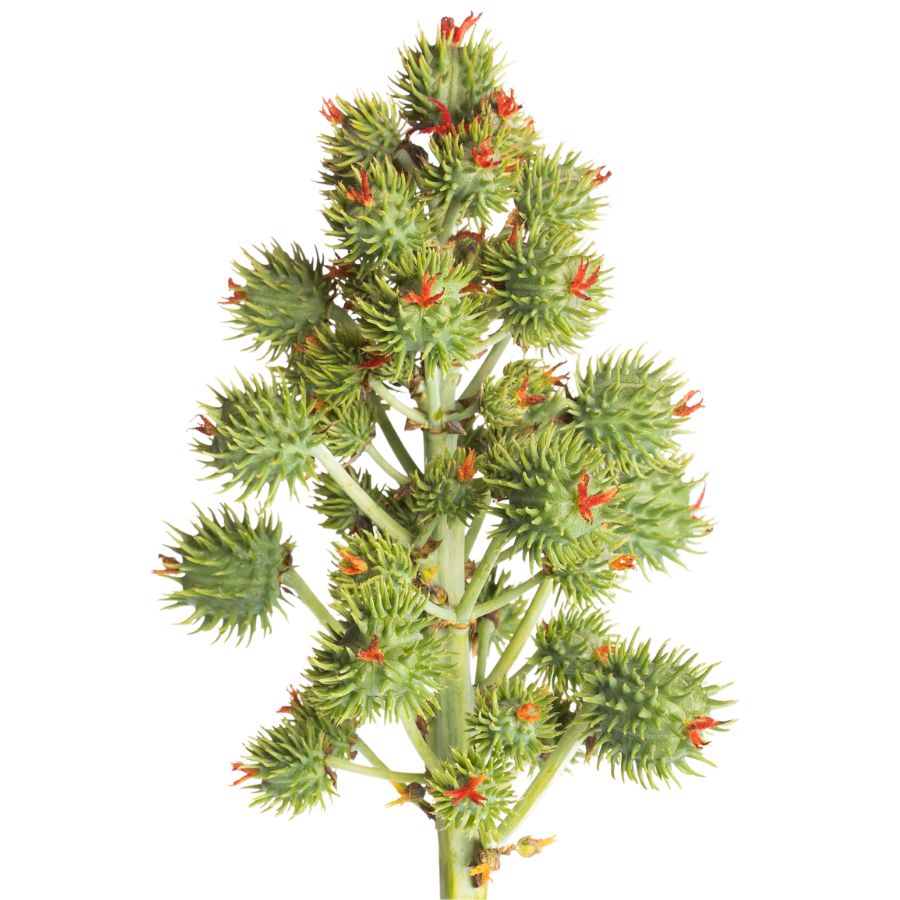
Often mistaken for: Wild rhubarb (Rumex spp. or Rheum spp.)
Castor bean is a bold plant with large, lobed leaves and tall red or green stalks, often found in gardens, along roadsides, and in disturbed areas in warmer regions in the US. Its red-tinged stems and overall size can resemble wild rhubarb to the untrained eye.
Unlike rhubarb, castor bean plants produce spiny seed pods containing glossy, mottled seeds that are extremely toxic. These seeds contain ricin, a deadly compound even in small amounts. While all parts of the plant are toxic, the seeds are especially dangerous and should never be handled or ingested.
A Quick Reminder
Before we get into the specifics about where and how to find these mushrooms, we want to be clear that before ingesting any wild mushroom, it should be identified with 100% certainty as edible by someone qualified and experienced in mushroom identification, such as a professional mycologist or an expert forager. Misidentification of mushrooms can lead to serious illness or death.
All mushrooms have the potential to cause severe adverse reactions in certain individuals, even death. If you are consuming mushrooms, it is crucial to cook them thoroughly and properly and only eat a small portion to test for personal tolerance. Some people may have allergies or sensitivities to specific mushrooms, even if they are considered safe for others.
The information provided in this article is for general informational and educational purposes only. Foraging for wild mushrooms involves inherent risks.
How to Get the Best Results Foraging
Safety should always come first when it comes to foraging. Whether you’re in a rural forest or a suburban greenbelt, knowing how to harvest wild foods properly is a key part of staying safe and respectful in the field.
Always Confirm Plant ID Before You Harvest Anything
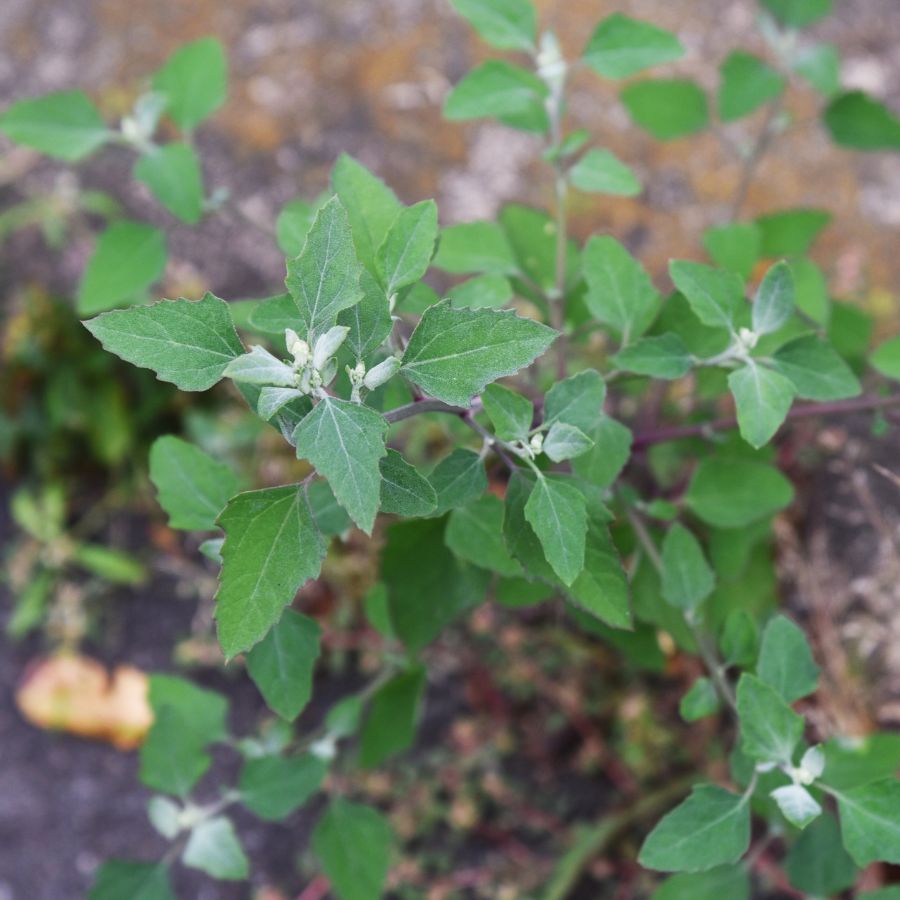
Knowing exactly what you’re picking is the most important part of safe foraging. Some edible plants have nearly identical toxic lookalikes, and a wrong guess can make you seriously sick.
Use more than one reliable source to confirm your ID, like field guides, apps, and trusted websites. Pay close attention to small details. Things like leaf shape, stem texture, and how the flowers or fruits are arranged all matter.
Not All Edible Plants Are Safe to Eat Whole
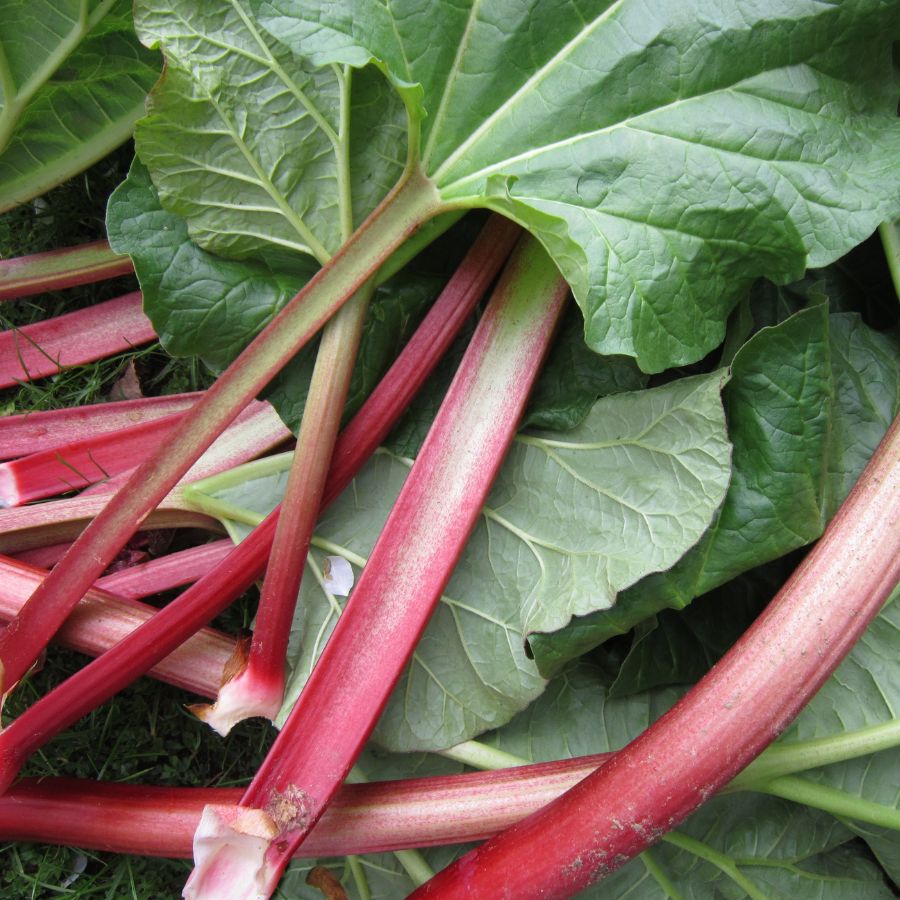
Just because a plant is edible doesn’t mean every part of it is safe. Some plants have leaves, stems, or seeds that can be toxic if eaten raw or prepared the wrong way.
For example, pokeweed is only safe when young and properly cooked, while elderberries need to be heated before eating. Rhubarb stems are fine, but the leaves are poisonous. Always look up which parts are edible and how they should be handled.
Avoid Foraging in Polluted or Contaminated Areas
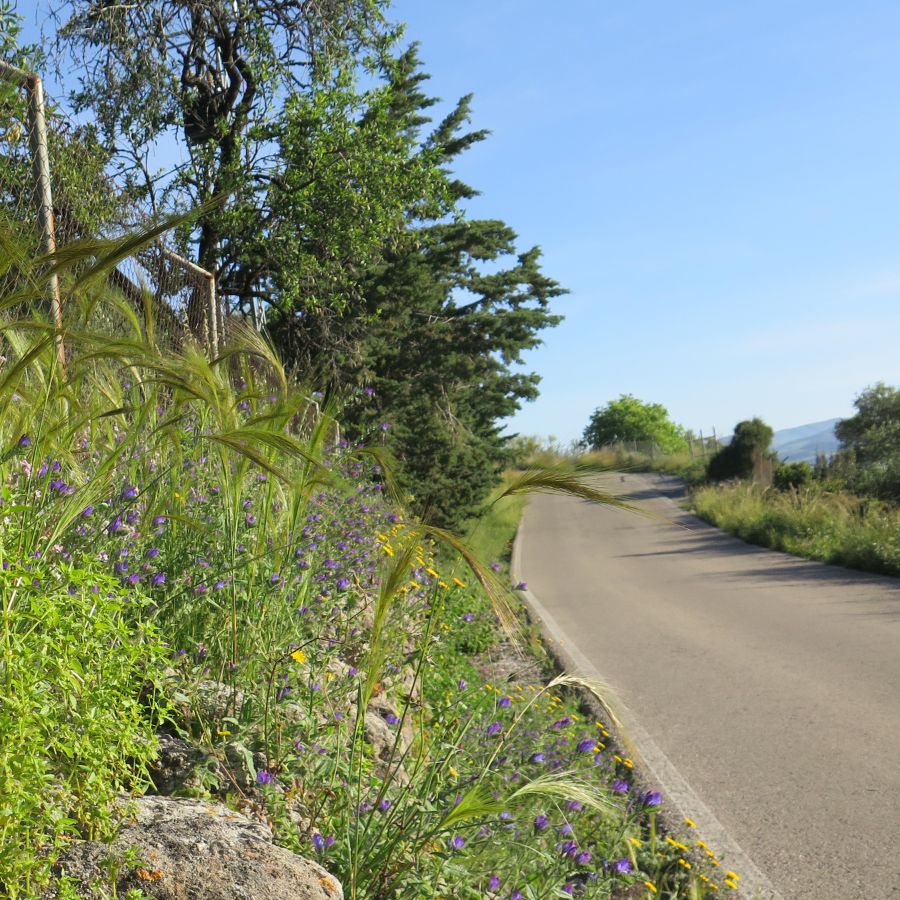
Where you forage matters just as much as what you pick. Plants growing near roads, buildings, or farmland might be coated in chemicals or growing in polluted soil.
Even safe plants can take in harmful substances from the air, water, or ground. Stick to clean, natural areas like forests, local parks that allow foraging, or your own yard when possible.
Don’t Harvest More Than What You Need
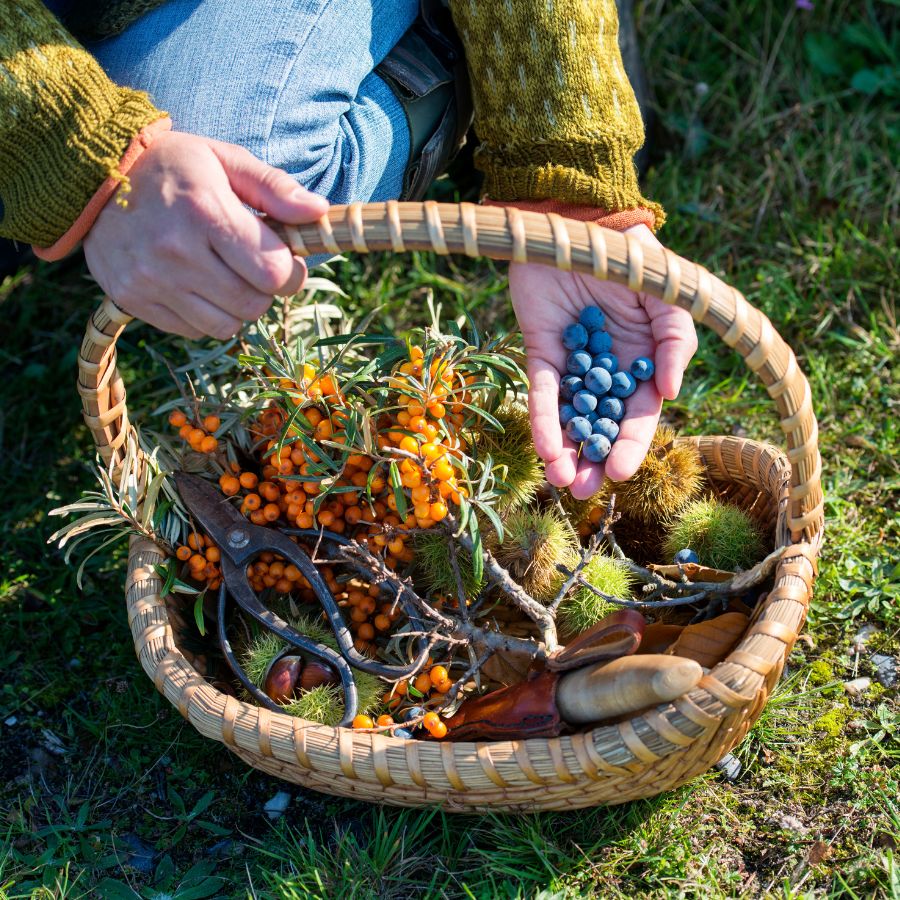
When you forage, take only what you plan to use. Overharvesting can hurt local plant populations and reduce future growth in that area.
Leaving plenty behind helps plants reproduce and supports wildlife that depends on them. It also ensures other foragers have a chance to enjoy the same resources.
Protect Yourself and Your Finds with Proper Foraging Gear

Having the right tools makes foraging easier and safer. Gloves protect your hands from irritants like stinging nettle, and a good knife or scissors lets you harvest cleanly without damaging the plant.
Use a basket or breathable bag to carry what you collect. Plastic bags hold too much moisture and can cause your greens to spoil before you get home.
This forager’s toolkit covers the essentials for any level of experience.
Watch for Allergic Reactions When Trying New Wild Foods

Even if a wild plant is safe to eat, your body might react to it in unexpected ways. It’s best to try a small amount first and wait to see how you feel.
Be extra careful with kids or anyone who has allergies. A plant that’s harmless for one person could cause a reaction in someone else.
Check Local Rules Before Foraging on Any Land
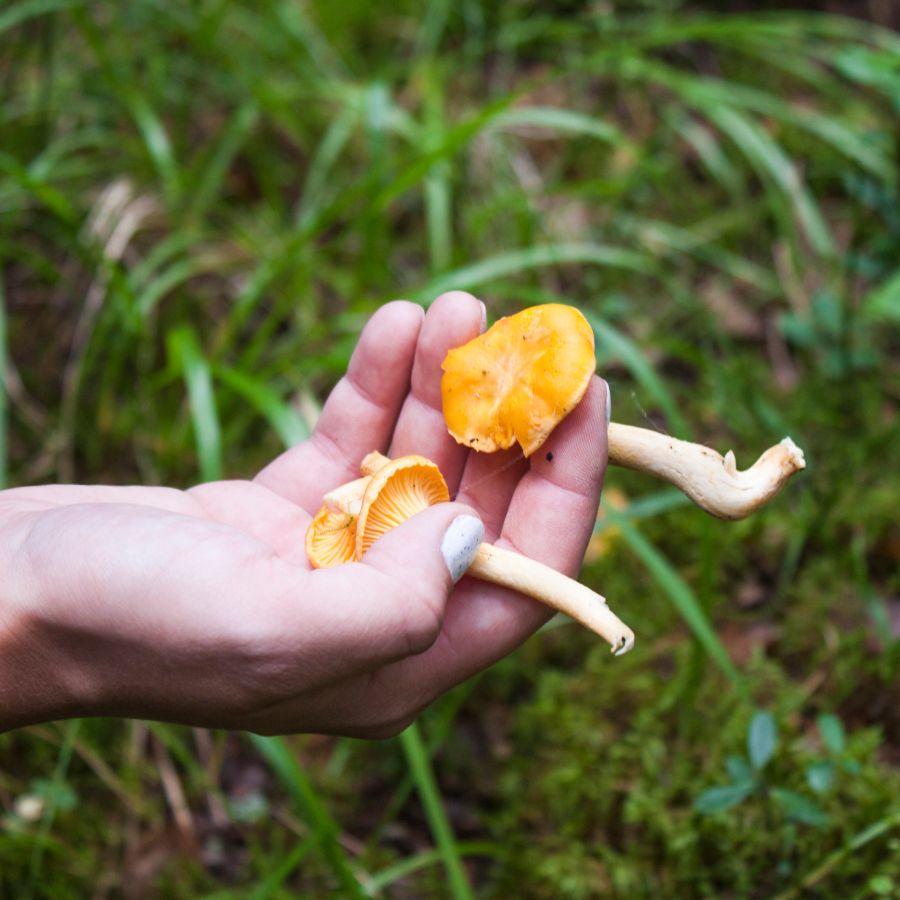
Before you start foraging, make sure you know the rules for the area you’re in. What’s allowed in one spot might be completely off-limits just a few miles away.
Some public lands permit limited foraging, while others, like national parks, usually don’t allow it at all. If you’re on private property, always get permission first.
Before you head out
Before embarking on any foraging activities, it is essential to understand and follow local laws and guidelines. Always confirm that you have permission to access any land and obtain permission from landowners if you are foraging on private property. Trespassing or foraging without permission is illegal and disrespectful.
For public lands, familiarize yourself with the foraging regulations, as some areas may restrict or prohibit the collection of mushrooms or other wild foods. These regulations and laws are frequently changing so always verify them before heading out to hunt. What we have listed below may be out of date and inaccurate as a result.
Where to Find Forageables in the State
There is a range of foraging spots where edible plants grow naturally and often in abundance:
| Plant | Locations |
| Stinging Nettle (Urtica dioica) | – Stephens State Forest – Yellow River State Forest – Dolliver Memorial State Park |
| Wood Sorrel (Oxalis stricta) | – Brushy Creek State Recreation Area – Waubonsie State Park – Pilot Knob State Park |
| Milkweed (Asclepias syriaca) | – Lacey-Keosauqua State Park – Lake Macbride State Park – Stone State Park |
| Lamb’s Quarters (Chenopodium album) | – Volga River State Recreation Area – Big Creek State Park – Elk Rock State Park |
| Curly Dock (Rumex crispus) | – Backbone State Park – Lake Darling State Park – Mines of Spain State Recreation Area |
| Wild Leek / Ramp (Allium tricoccum) | – Yellow River State Forest – Effigy Mounds National Monument – Echo Valley State Park |
| Chicory (Cichorium intybus) | – Brush Creek Canyon Preserve – Rock Creek State Park – Prairie Rose State Park |
| Jerusalem Artichoke (Helianthus tuberosus) | – Shimek State Forest – Lake Wapello State Park – Hartman Reserve Nature Center |
| Dandelion (Taraxacum officinale) | – George Wyth State Park – Honey Creek Resort State Park – Brown’s Woods Forest Preserve |
| Shepherd’s Purse (Capsella bursa-pastoris) | – Lake Ahquabi State Park – Pikes Peak State Park – Springbrook State Park |
| Burdock (Arctium minus) | – Neal Smith National Wildlife Refuge – Maquoketa Caves State Park – Palisades-Kepler State Park |
| Wild Garlic (Allium vineale) | – Lake Anita State Park – Wildcat Den State Park – Nine Eagles State Park |
| Cattail (Typha latifolia) | – Union Grove State Park – McIntosh Woods State Park – Big Spirit Lake Wildlife Management Area |
| Watercress (Nasturtium officinale) | – Coldwater Spring (Decorah area) – Backbone State Park – White Pine Hollow State Preserve |
| American Plum (Prunus americana) | – Loess Hills State Forest – Ledges State Park – Hitchcock Nature Center |
| Wild Grape (Vitis riparia) | – Lake Red Rock Area – Dolliver Memorial State Park – Stephens State Forest |
| Black Raspberry (Rubus occidentalis) | – Stone State Park – Cedar Rock State Park – Shimek State Forest |
| Red Raspberry (Rubus idaeus) | – Yellow River State Forest – Volga River State Recreation Area – Effigy Mounds National Monument |
| Blackberry (Rubus allegheniensis) | – Waubonsie State Park – Hartman Reserve Nature Center – Pilot Knob State Park |
| Mulberry (Morus rubra) | – Lake Keomah State Park – Wildcat Den State Park – Lake Manawa State Park |
| Elderberry (Sambucus canadensis) | – Mines of Spain State Recreation Area – Brushy Creek State Recreation Area – Lacey-Keosauqua State Park |
| Ground Cherry (Physalis longifolia) | – Waubonsie State Park – Stone State Park – Ledges State Park |
| Wild Strawberry (Fragaria virginiana) | – Yellow River State Forest – Effigy Mounds National Monument – Brush Creek Canyon Preserve |
| Serviceberry (Amelanchier alnifolia) | – Pilot Knob State Park – Stephens State Forest – Hitchcock Nature Center |
| Hickory (Carya ovata) | – Lake Keomah State Park – Lacey-Keosauqua State Park – Dolliver Memorial State Park |
| Black Walnut (Juglans nigra) | – Shimek State Forest – Backbone State Park – George Wyth State Park |
| American Hazelnut (Corylus americana) | – Loess Hills State Forest – Nine Eagles State Park – Brown’s Woods Forest Preserve |
| Butternut (Juglans cinerea) | – Pikes Peak State Park – Echo Valley State Park – Volga River State Recreation Area |
| American Persimmon (Diospyros virginiana) | – Lake Wapello State Park – Honey Creek Resort State Park – Elk Rock State Park |
| Common Blue Violet (Viola sororia) | – Lake Macbride State Park – Maquoketa Caves State Park – Wildcat Den State Park |
| Hop Clover (Trifolium campestre) | – Prairie Rose State Park – Brushy Creek State Recreation Area – Springbrook State Park |
| White Clover (Trifolium repens) | – Lake Anita State Park – Union Grove State Park – McIntosh Woods State Park |
| Red Clover (Trifolium pratense) | – Lake Darling State Park – Cedar Rock State Park – Palisades-Kepler State Park |
| Purple Salsify (Tragopogon porrifolius) | – Big Creek State Park – Lake Red Rock Area – Mines of Spain State Recreation Area |
| Wild Mustard (Sinapis arvensis) | – Rock Creek State Park – Wildcat Den State Park – Lake Ahquabi State Park |
| Garlic Mustard (Alliaria petiolata) | – White Pine Hollow State Preserve – Stone State Park – Ledges State Park |
| Dwarf Mallow (Malva neglecta) | – Pilot Knob State Park – Lake Manawa State Park – Brushy Creek State Recreation Area |
| Purslane (Portulaca oleracea) | – Backbone State Park – Neal Smith National Wildlife Refuge – Honey Creek State Park |
| Sunflower (Helianthus annuus) | – Stephens State Forest – Volga River State Recreation Area – Shimek State Forest |
| Smartweed (Persicaria maculosa) | – Nine Eagles State Park – George Wyth State Park – Lake Wapello State Park |
| Peppergrass (Lepidium virginicum) | – Hitchcock Nature Center – Brown’s Woods Forest Preserve – Lake Anita State Park |
| Chufa (Cyperus esculentus) | – McIntosh Woods State Park – Big Spirit Lake Wildlife Management Area – Lake Keomah State Park |
Peak Foraging Seasons
Different edible plants grow at different times of year, depending on the season and weather. Timing your search makes all the difference.
Spring
Spring brings a fresh wave of wild edible plants as the ground thaws and new growth begins:
| Plant | Months | Best Weather Conditions |
| Stinging Nettle (Urtica dioica) | March – May | Cool, damp mornings after rain |
| Dandelion (Taraxacum officinale) | March – May | Sunny or partly cloudy days after light rain |
| Shepherd’s Purse (Capsella bursa-pastoris) | March – May | Cool and moist conditions |
| Wild Garlic (Allium vineale) | March – May | Damp mornings with loose soil |
| Watercress (Nasturtium officinale) | March – May | Flowing cool water with partial sunlight |
| Wood Sorrel (Oxalis stricta) | April – June | Mild temperatures, moist soil |
| Wild Leek / Ramp (Allium tricoccum) | April – May | Shady forests with moist soil after spring rain |
| Curly Dock (Rumex crispus) | April – May | Overcast days with moist, soft soil |
| Cattail (Typha latifolia) | April – May | Wetlands with rising temps and standing water |
| Burdock (Arctium minus) | April – May | Humid mornings, soft soil for digging |
| Wild Strawberry (Fragaria virginiana) | April – May | Cool, moist conditions with partial sunlight |
| Serviceberry (Amelanchier alnifolia) | April – May | Mild temperatures after spring rain |
| Common Blue Violet (Viola sororia) | April – May | Damp, shaded forest edges after rain |
| Hop Clover (Trifolium campestre) | April – May | Mild temperatures and moderate soil moisture |
| White Clover (Trifolium repens) | April – May | Cool, grassy areas after spring showers |
| Red Clover (Trifolium pratense) | April – May | Moist soil and warm spring days |
| Wild Mustard (Sinapis arvensis) | April – May | Sunny conditions with moist ground |
| Garlic Mustard (Alliaria petiolata) | April – May | Shady forests with rich, moist soil |
| Dwarf Mallow (Malva neglecta) | April – May | Mild, partly sunny weather with loose soil |
Summer
Summer is a peak season for foraging, with fruits, flowers, and greens growing in full force:
| Plant | Months | Best Weather Conditions |
| Wild Strawberry (Fragaria virginiana) | June | Sunny days with occasional rain |
| Common Blue Violet (Viola sororia) | June | Moist, shaded areas with steady temperatures |
| Black Raspberry (Rubus occidentalis) | June – July | Warm dry days following summer rain |
| Red Raspberry (Rubus idaeus) | June – July | Sunny days, well-drained soil |
| Mulberry (Morus rubra) | June – July | Hot, sunny days with minimal wind |
| Shepherd’s Purse (Capsella bursa-pastoris) | June – July | Morning dew and mild humidity |
| Wild Garlic (Allium vineale) | June – July | Warm soil, not overly wet |
| Hop Clover (Trifolium campestre) | June – July | Warm days, partial sun, low wind |
| White Clover (Trifolium repens) | June – July | Grassy meadows after early summer rain |
| Red Clover (Trifolium pratense) | June – July | Warm, humid days with rich soil |
| Purple Salsify (Tragopogon porrifolius) | June – July | Dry, open fields with full sunlight |
| Milkweed (Asclepias syriaca) | June – August | Warm sunny days with recent rainfall |
| Lamb’s Quarters (Chenopodium album) | June – August | Hot days with rich soil and occasional rain |
| Dandelion (Taraxacum officinale) | June – August | Early mornings after light summer rain |
| Wood Sorrel (Oxalis stricta) | June – August | Moist soil in shaded areas after rain |
| Cattail (Typha latifolia) | June – August | Hot days in standing water areas |
| Watercress (Nasturtium officinale) | June – August | Cool, clean streams with some shade |
| Dwarf Mallow (Malva neglecta) | June – August | Warm days with partial sun and light soil |
| Peppergrass (Lepidium virginicum) | June – August | Open areas after rain with sandy soil |
| Elderberry (Sambucus canadensis) | July – August | Humid days near water sources |
| Wild Grape (Vitis riparia) | July – August | Sunny days after periods of rain |
| Purslane (Portulaca oleracea) | July – August | Hot, dry weather with sandy or compact soil |
| Sunflower (Helianthus annuus) | July – August | Full sun and well-drained soils |
| Smartweed (Persicaria maculosa) | July – August | Moist soil and warm, humid conditions |
| Ground Cherry (Physalis longifolia) | July – September | Warm, dry days with well-drained soil |
| Chufa (Cyperus esculentus) | July – September | Hot days, wet soil with shallow standing water |
| Chicory (Cichorium intybus) | June – September | Sunny, dry roadsides or fields |
Fall
As temperatures drop, many edible plants shift underground or produce their last harvests:
| Plant | Months | Best Weather Conditions |
| Lamb’s Quarters (Chenopodium album) | September | Cooler temps before frost hits |
| Wild Grape (Vitis riparia) | September | Warm days with drying air |
| Elderberry (Sambucus canadensis) | September | Slightly humid, warm afternoons |
| American Plum (Prunus americana) | September | Dry, sunny days for ripe fruit |
| Blackberry (Rubus allegheniensis) | September | Dry conditions with mild warmth |
| Jerusalem Artichoke (Helianthus tuberosus) | September – November | Cool, sunny days after first frost |
| Chicory (Cichorium intybus) | September – October | Dry weather with consistent sunshine |
| Burdock (Arctium minus) | September – October | Damp soil for digging roots |
| Curly Dock (Rumex crispus) | September – October | Moist ground and mild temps |
| Dandelion (Taraxacum officinale) | September – October | Cool mornings after light rain |
| Ground Cherry (Physalis longifolia) | September – October | Cool, dry days before first frost |
| Hickory (Carya ovata) | September – October | Crisp mornings and dry afternoons |
| Black Walnut (Juglans nigra) | September – October | Dry ground with moderate winds for nut drop |
| American Hazelnut (Corylus americana) | September – October | Cool days with low humidity |
| Butternut (Juglans cinerea) | September – October | Dry, sunny days after leaf fall |
| Purple Salsify (Tragopogon porrifolius) | September – October | Cooler weather with damp soil |
| Wild Mustard (Sinapis arvensis) | September – October | Sunny, cool weather with moist fields |
| Dwarf Mallow (Malva neglecta) | September – October | Dry, mild conditions in open soil patches |
| Peppergrass (Lepidium virginicum) | September – October | Low humidity and light winds |
| Chufa (Cyperus esculentus) | September – October | Warm days with soft, wet soil for digging |
| American Persimmon (Diospyros virginiana) | October – November | First frost followed by sunny days |
Winter
Winter foraging is limited but still possible, with hardy plants and preserved growth holding on through the cold:
| Plant | Months | Best Weather Conditions |
| Jerusalem Artichoke (Helianthus tuberosus) | November – February | After ground thaws slightly, cold but not frozen |
| Burdock (Arctium minus) | December – February | Soft ground before deep freeze |
| Wild Garlic (Allium vineale) | December – February | Mild winter days with thawed ground |
| Curly Dock (Rumex crispus) | December – February | Light snow cover, unfrozen soil |
| Garlic Mustard (Alliaria petiolata) | December – February | Milder winter days in thawed, shaded woods |
| Cattail (Typha latifolia) | January – February | Shallow water with no ice or light thaw |
| Dandelion (Taraxacum officinale) | February | Sunny patches on south-facing slopes |
| Watercress (Nasturtium officinale) | February | Flowing, unfrozen springs or creeks |
| Dwarf Mallow (Malva neglecta) | February | Thawed patches in disturbed ground |
| Chufa (Cyperus esculentus) | February | Ground soft enough to dig before deep freeze |
One Final Disclaimer
The information provided in this article is for general informational and educational purposes only. Foraging for wild plants and mushrooms involves inherent risks. Some wild plants and mushrooms are toxic and can be easily mistaken for edible varieties.
Before ingesting anything, it should be identified with 100% certainty as edible by someone qualified and experienced in mushroom and plant identification, such as a professional mycologist or an expert forager. Misidentification can lead to serious illness or death.
All mushrooms and plants have the potential to cause severe adverse reactions in certain individuals, even death. If you are consuming foraged items, it is crucial to cook them thoroughly and properly and only eat a small portion to test for personal tolerance. Some people may have allergies or sensitivities to specific mushrooms and plants, even if they are considered safe for others.
Foraged items should always be fully cooked with proper instructions to ensure they are safe to eat. Many wild mushrooms and plants contain toxins and compounds that can be harmful if ingested.

